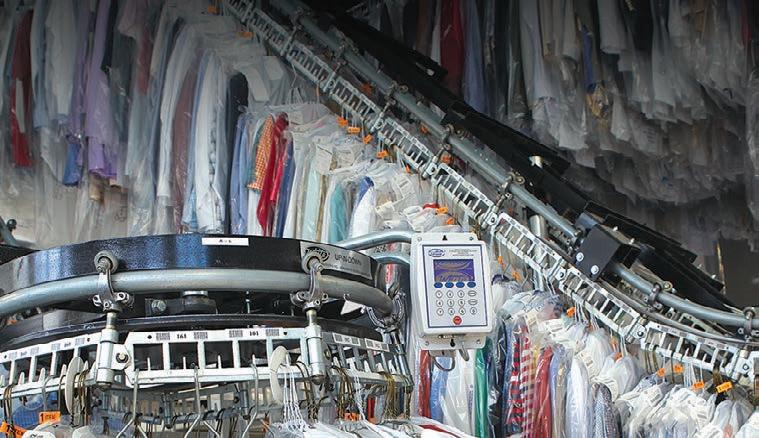




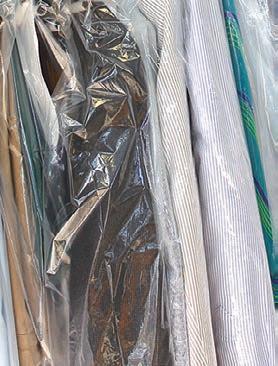




14 American Trade Magazines All rights reserved. ® July 2014 Automation Will It Make Your Plant More Profitable?


Maineline Computer Systems 1-800-354-2525 www.compassmax.com Emailing so advanced, it's simple. • Customer Service Manager • Unlimited Price List Options • Automated Email Marketing • True Touch Screen or Keyboard Interface • Credit Card Integration • Accounts Receivable • Multiple Auto Assembly Integration Options • Cash and Inventory Control • Customer Loyalty Programs • CSR Alerts • Pick Up and Delivery • Multi Store Capabilities Is your business heading in the right direction? Dynamic Emailing: Compassmax can create unlimited user defined automatic emails with HTML graphics. Options include new customer emails, lost customers emails, notifications when orders are ready, garment pictures, birthdays or anniversaries wishes and more!
Perc users – chlorinated solvent belongs in your machine, not on your board. Alternative solvent users – use stain removers that align with your chosen solvent. Replace traditional POG’s and VDS’s with TarGo® EF and EasyGo®, two of Wilson’s high-performance, cost-effective, California-compliant stain removers. You'll be taking steps to avoid future regulatory and remediation nightmares, while providing your customers with the garment quality they desire!
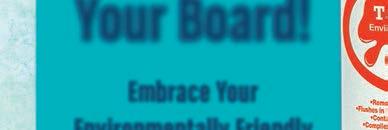
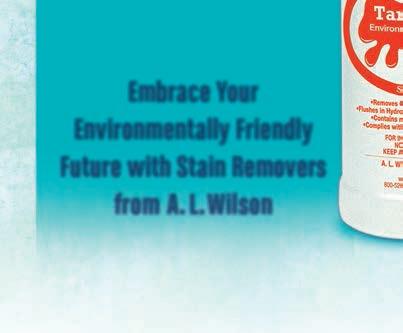
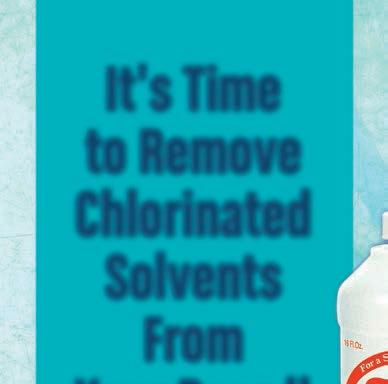
EasyGo spray spotter quickly penetrates to absorb collar & cuff stains, perspiration, ground-in soil and more, all without brushing. Turn to TarGo EF to remove any tough oil based stains that remain behind.
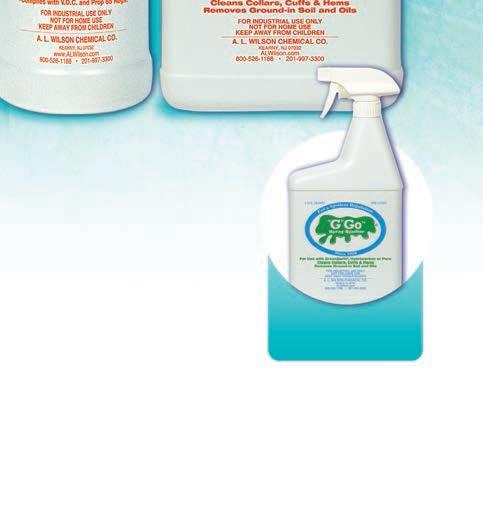
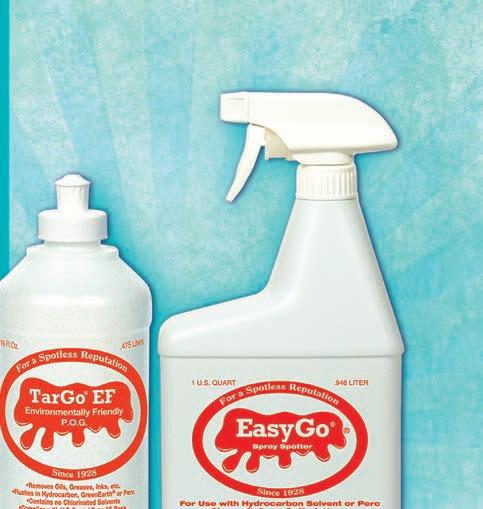
To learn more, visit ALWilson.com or call 800-526-1188 A. L. WILSON CHEMICAL CO.



Time to Remove
From Your Board! Embrace Your Environmentally Friendly Future with Stain Removers from A.L. Wilson
It's
Chlorinated Solvents
STAIN
at
GreenEarth is a trademark of GreenEarth Cleaning, LLC.
Become a
WIZARD
ALWilson.com For GreenEarth,® use ||G|| Go®
drycleaner
How the Right Image Boosts Profits Create a compelling brand that tells your “unique” story about price, value and service.
Phillip M. Perry
Automation: Will It Make Your Plant More Profitable? The appropriateness for automation in a drycleaning plant is dependent on many factors. Where does yours fit?

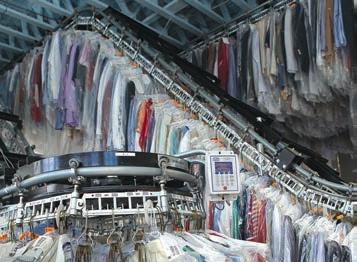
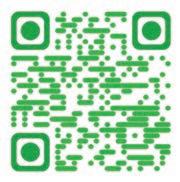
Diana
America’s Best Cleaners’ Christopher White tells SEFA conference attendees how to find and train “superstar” customer service reps.
Bruce Beggs
Consultant Sandy Seay briefs SEFA conference attendees on 20 hot-button human resources issues.
Bruce
2 American Drycleaner, July 2014 www.americandrycleaner.com
AMERICAN AMERICAN
FEATURES
14
July 2014 Vol. 81, No. 4 DEPARTMENTS Pre-Inspection 4 Talk of The Trade 6 The Numbers 10 Upcoming Events 12 Spotting Tips 34 Tapping on Sentiment Martin Young Industry Observations 44 Learn From a Pro Howard Scott Hurricane Preparedness Tips 48 Education & Training Calendar 50 Your Money 52 Breaking Down Brokers Bill Lynott Around the Industry 54 Classified Advertising 58 Advertiser Index 62 Wrinkle in Time 64
(Cover Photo: Rainbow Cleaners, Oxford, Miss.)
20
Vollmer 28 CSR to Superstar!
38
HR Management Flash Points
20
Beggs NEED HELP FINDING THE HIDDEN HANGER? Scan this QR Code for help in finding the hidden hanger on this month’s cover. Good luck!
“Business has never been better.”


































Since 2003, CBS has given me consistent updates and easy to understand tech support, all at a price that our industry can afford. I would recommend CBS, and I have, to anyone who is still wasting their time and money on those over priced POS systems. DanLoesher SunshineCleaners




























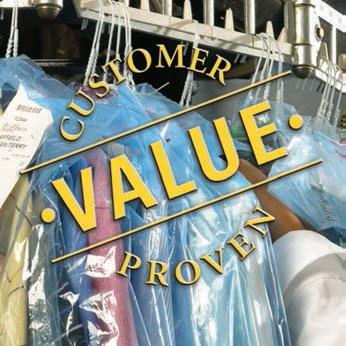
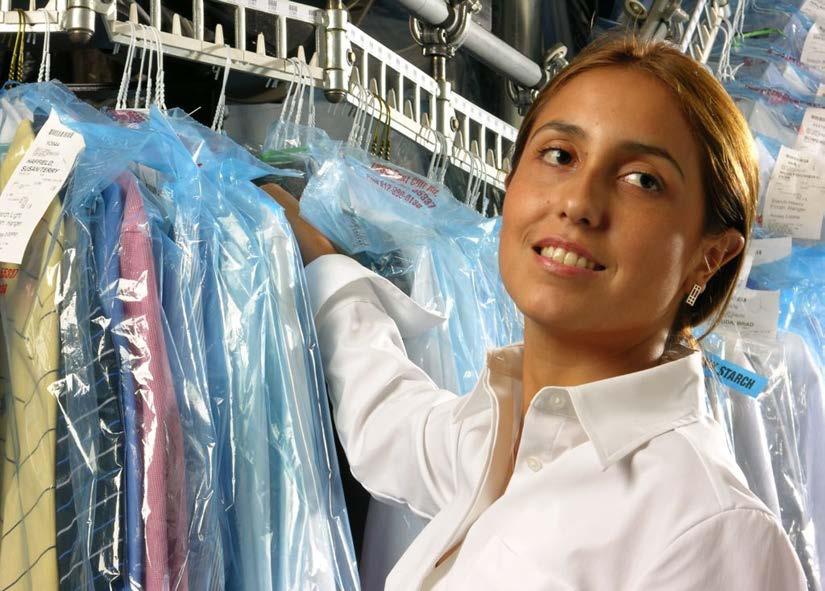
800.406.9649 sales@cleanerbusiness.com www.cleanerbusiness.com We Speak Cleaner
PRE-INS P ECTION
Constant disciplined management can achieve high productivity without automation, says veteran consultant Diana Vollmer, but she finds consistently efficient management to be somewhat rare.
That’s where bar coding, assisted assembly, and the like could help boost a dry cleaner’s efficiency.
Beginning on page 20, Vollmer examines the potential benefits of automation and analyzes the factors that can come into play if you’re look ing to move in that direction.
Bruce Beggs
But the appropriateness of automation is dependent on many factors, including workforce size, the number of pieces processed, required turnaround times, and more.
Publisher Charles Thompson 312-361-1680
cthompson@american trademagazines.com
Editorial Director Bruce Beggs 312-361-1683
bbeggs@american trademagazines.com
Production Manager
Roger Napiwocki
National Sales Director

Donald Feinstein 312-361-1682 dfeinstein@american trademagazines.com
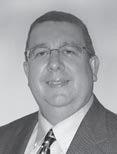
Digital Media Director

Nathan Frerichs 312-361-1681 nfrerichs@american trademagazines.com Main: 312-361-1700 Fax: 312-361-1685
I’m just back from the South East ern Fabricare Association conference, where I heard America’s Best Cleaners’ Christopher White espouse CSR de velopment (see page 28). Seek out the candidate ready to become a “garment care consultant,” not an “order taker”— having a pulse shouldn’t be enough to get an applicant’s foot in the door.
Also from my SEFA trip, consul tant Sandy Seay ticks off 20 human resources management “flash points.” His checklist begins on page 38. O
American Drycleaner (ISSN 0002-8258) is published monthly except Nov/Dec combined. Subscription prices, payment in advance: U.S., 1 year $39.00; 2 years $73.00. Foreign, 1 year $89.00; 2 years $166.00. Single copies $7.00 for U.S., $14.00 for all other countries. Published by American Trade Magazines LLC, 566 West Lake Street, Suite 420, Chicago, IL 60661. Periodicals postage paid at Chicago, IL and at additional mailing offices.
POSTMASTER, Send changes of address and form 3579 to American Drycleaner, Subscription Dept., 440 Quadrangle Drive, Suite E, Bolingbrook, IL 60440. Volume 81, number 4. Editorial, executive and advertis ing offices are at 566 West Lake Street, Suite 420, Chicago, IL 60661. Charles Thompson, President and Publisher. American Drycleaner is distributed selectively to: qualified dry cleaning plants and distributors in the United States. No material appearing in American Drycleaner may be reprinted without written permission. The publisher reserves the right to reject any advertising for any reason. © Copyright AMERICAN TRADE MAGA ZINES LLC, 2014. Printed in U.S.A.
American Drycleaner, July 2014 www.americandrycleaner.com
4
Contributing Editors Howard Kaschyk Carolyn Nankervis Howard Scott John Spomar Jr. Jean Teller Diana Vollmer Martin Young Editorial Assistant Carlo Calma Editorial Interns Lauren Dixon Charles Thompson II
x100
drycleaner.com
SUBSCRIPTIONS 630-739-0900
www.american
Auto-Appropriate?
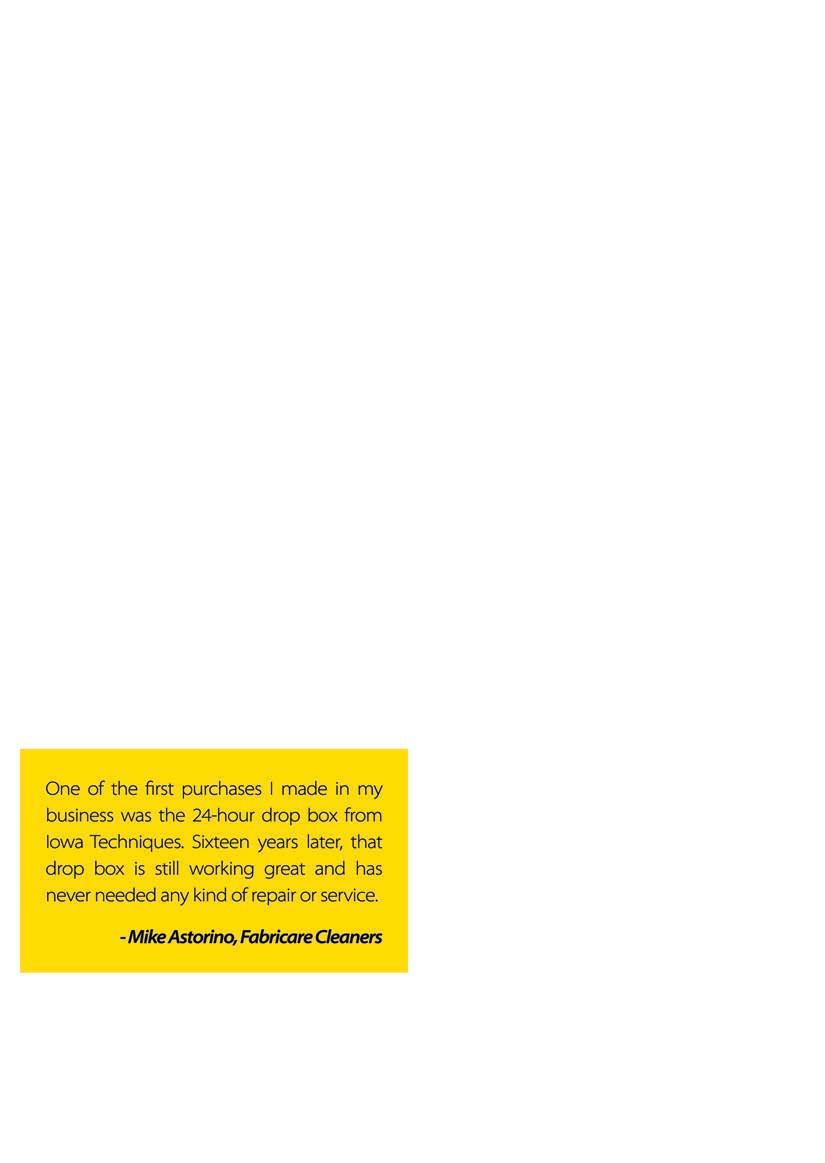

Survey: Dry cleaners go commercial for hotel/motel accounts

CHICAGO — More and more dry cleaners are deciding to process commercial accounts, with the majority of operators (77.1%) saying they handle hotel/motel guest dry cleaning at their plant, according to results of June’s American Drycleaner Your Views survey.
Roughly 37% say they provide uniform/workwear services; 25.7% process restaurant/foodservice linens; equal shares of 17.1% handle catering service linens or healthcare linens; 14.3% process hotel/motel linens and napery; and roughly 23% process “other” commercial accounts, like government contracts and bulk dry cleaning.
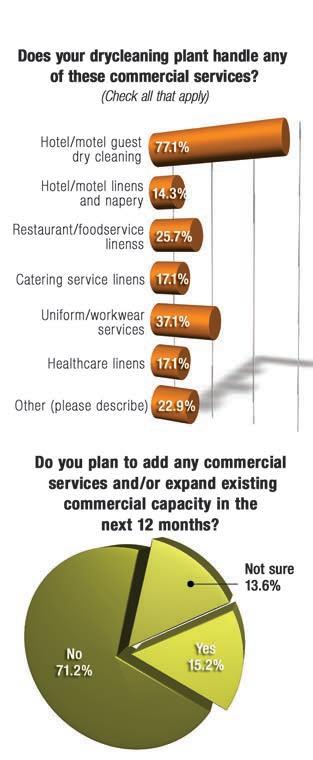
The majority of dry cleaners surveyed (71.2%) say they do not plan on adding any commercial services and/or expanding existing commercial capacity in the next year, while roughly 15% say they have such plans; 13.6% are “not sure.”
One dry cleaner says 100% of his/ her operation’s profits and gross sales come from processing commercial accounts.
Others reported a range of as low as 1%, to as high as 25%, of their operation’s profits coming from processing commercial accounts.
Dry cleaners surveyed say as little as 1% of their gross sales, to as much
6 American
July 2014 www.americandrycleaner.com TALK OF THE TRADE ▲
Drycleaner,

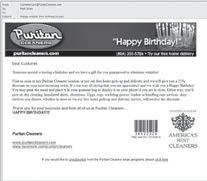

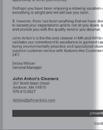
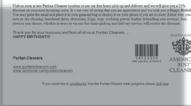
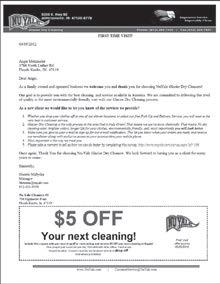
as 35%, come from processing commercial accounts.
Many dry cleaners say the biggest chal lenge in handling commercial accounts is meeting the fast turnaround requirements set by customers.
“[Customers] want very fast turnaround, meaning they only have so much inventory to work with, and haven’t bought any more stock,” one says.
Topstories@www.AmericanDrycleaner.com forthe30daysendingJune15
TOP NEWS STORIES
1. EnviroStar Announces Sale of Master Franchise License for Mexico 2. America’s Best Cleaners Affiliate Meeting Focuses on ‘Human Factor’
TOP COLUMNS & FEATURES
1. Customer Service at the Dry Cleaner: The Best Kept Secret
“Turnaround needs to be fast [and there is] lack of capacity to handle the volume,” says another.
While others say they are most challenged by the inconsistent workload, anoth er says “differing equipment and processing needs” are another difficult aspect of han dling commercial services.
While American Drycleaner’s Your Views survey presents a snapshot of the trade audience’s viewpoints, it should not be considered scientific. Due to rounding, percentages may not add up to 100%.
Subscribers to American Drycleaner emails are invited each month to participate in a brief industry survey they can complete anonymously. The entire American Dry cleaner audience is encouraged to partici pate, as a greater number of responses will help to better define owner/operator opin ions and industry trends. O
To find past Your Views survey stories or share this month’s with your colleagues, visit www.americandrycleaner.com.
Supplemental Stain Removal: An Eye on Longevity
Spot-Check Your Counter Staff
Developing Leadership in Your Drycleaning Business
StatShot: Dry Cleaners Report Downpour of Sales Gains in April WEB EXCLUSIVE!
TOP STORIES @ OUR SISTER SITES
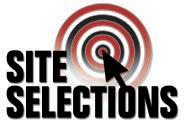
www.AmericanCoinOp.com:
CG West Conference Focuses on Boosting Store Profits
Extra Services, Extra Profit
Firestone Financial Relocates to New HQ, Signs Multi-Year Credit Facility
www.AmericanLaundryNews.com:
Reported Linen Contamination at NOLA Hospital Serves as Industry Wake-Up Call
Tunnel Washers: The Answer to Rising Labor, Utility Costs?
OPL 101: Wash Formulas, Equipment: Some Key Considerations
American Drycleaner, July 2014 www.americandrycleaner.com
8
3. Generational Expert Headlines CRDN International Convention
2.
3.
4.
5.
1.
2.
3.
1.
2.
3.
Fast turnarounds, inconsistent workload, differing equipment and processing needs present challenges for handling commercial accounts
Time to Switch?
Not satis ed with your point of sale computer hardware and software? Move to Fabricare Manager’s a ordable, reliable and secure system. You (and your customers) will be happy you did. Just tell us you’re ready to make the change. Or, If you’re not yet using a POS, why not start with the best?

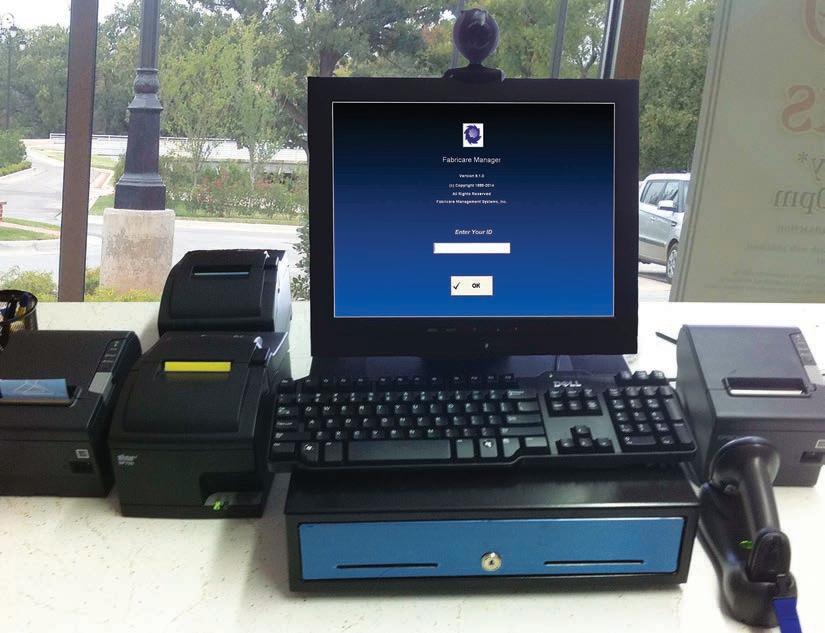
fabricaremanager.com • 888.249.5142 Drycleaning Management at Your Fingertips Fabricare
Manager
THE NUMBERS
WHILE THE U.S. UNEMPLOYMENT rate remained unchanged at 6.3% for May, the U.S. Bureau of Labor Statistics reported the number of non-farm jobs rose by 217,000. To this point in 2014, the unemployment rate has decreased by 1.2 percentage points, and the total number of unemployed—which stood at 9.8 million for May—has decreased by 1.9 million.
According to a CNN Money report, the economy has recouped all of the jobs lost when the recession began in December 2007, which means 8.7 million jobs have been added in the last seven years.
U.S. Secretary of Labor Thomas Perez, in response to the May unemployment figures, issued this statement: “The economy in May continued its steady recovery from the Great Recession, and we have now added 9.4 million new private-sector jobs over 51 consecutive months … but we must take steps to help those individuals who are still feeling the lasting effects of the Recession.”
IN THE JUNE BEIGE BOOK report from the Board of Governors of the Federal Reserve System, the 12 districts report expanding activity. Boston, New York, Richmond, Chicago, Minneapolis, Dallas and San Francisco districts report moderate growth, while the growth was modest in Philadelphia, Atlanta, Cleveland and St. Louis, and down slightly for the Kansas City district.
NEW FORECLOSURES WERE DOWN in April, RealtyTrac reports, a 1% decrease from March and 20% lower than April 2013. The National Association of Realtors, in its quarterly forecast, shows an improved outlook. The slower first-quarter growth, according to Lawrence Yun, chief economist for the NAR, was at odds with the economy’s health. “Gross Domestic Product should expand closer to 3% for the remainder of the year.”
THE INTERNATIONAL COUNCIL of Shopping Centers is expecting an increase in the coming year; sales
were up 4.8% for May over the 2013 figures, which is above the rate of the previous 12 months. For June, ICSC research forecasts that monthly comparablestore sales will rise 3.5%.
CONSUMER CONFIDENCE
WAS DOWN in May, according to the Surveys of Consumers, from Thomson Reuters and the University of Michigan. This was mainly due to poor prospects of wage increases in the near future. Most households are looking at a decline in income, which means consumers see a decrease in their financial future.
“Consumers anticipate that the economy will post a much improved pace of growth, and more importantly, create more robust jobs growth in the months ahead,” says Richard Curtin, Surveys of Consumers chief economist. “The small May loss should not detract from the fact that consumer confidence during the first five months of 2014 was higher than anytime since 2007.” O
—Jean Teller
10
www.americandrycleaner.com
American Drycleaner, July 2014
Our new generation of Point Of Sale system is designed for both small and larger cleaner stores. DryClean PRO Enterprise (DCPe) is even simpler to use than before. With user friendly screens and menus, DCPe will make your life easy. We offer, promise, and guarantee the best after sales support to our end users.

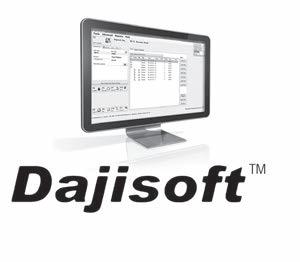
Save time and money and add to your profits by contacting existing clients and reaching out to new clients through DryClean PRO Enterprise’s built in MARKETING and EMAILING functionality. You’ll be able to send Thank You emails to new or Top 100 customers, Customers with overdue inventory, Customers that have not visited you for a while, Route customers & e-mail coupons to all your customers.
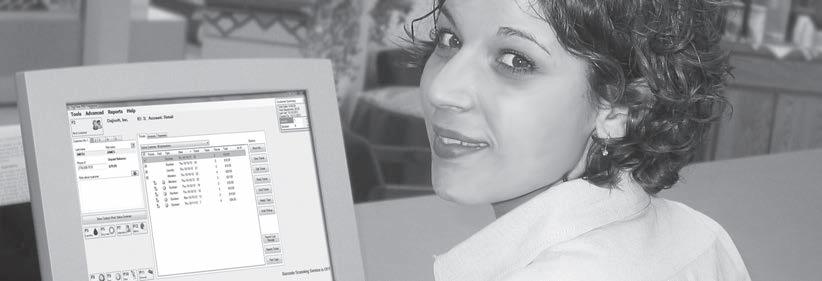


Call us about our new version of Uniform Tracker



Computer Systems (888) 325-4763 www.dajisoft.com
THINK OUTSIDE YOUR SYSTEM WITH Free cordless scanner with our Garment Verification System Contact us TODAY! LIMITED TIME OFFER Ask us about our DCPe RENTAL
EV E NTS
PDCA releases speaker lineup for O ct. 18-19 Expo
The Pennsylvania and Dela ware Cleaners Association (PDCA) has released its lineup of speakers for seminars scheduled during the group’s Drycleaning and Laundry Expo, Oct. 18-19 at the Atlantic City (N.J.) Convention Center.
The Saturday morning (Oct. 18) session will feature compliance ex pert Henry W D Parker, who will outline how to avoid OSHA fines.
Following will be James Peuster, speaking on A Fresh Look at Com peting and Winning in the Mar ketplace. DLI’s Mary Scalco will update attendees on her Institute’s activities.
On Sunday, Oct. 19, Ken Uchikoshi, president of Sankosha USA, will present How to Make Your Business Stand Out and Be More Successful. Don Desrosiers will then tell attendees that The Fu ture’s So Bright You’ll Need Sun glasses.
New programming features will be free afternoon seminars on the exhibit floor, and “Meet the Ex perts” sessions.
Visit www.pdclean.org, or call 215-830-8495, to learn more. O
July 25-26 Michigan Institute of Launder ing & Drycleaning Summer Convention. To be held in Gaylord, Mich. Call 877-3906453.
August 8-9 Midwest Drycleaning and Laundry Association Annual Convention. To be held in French Lick, Ind. Call 765-9396630.
August 22-24 California Cleaners As sociation Fabricare 2014 trade show and convention. To be held in Long Beach, Calif. Call 916-239-4070.
Sept. 25-28 Methods for Management Success 2014 Conference. To be held in Hilton Head, S.C. Call 253-851-6327.
Sept. 29-Oct. 1 Textile Rental Services Association Annual Conference. To be held in Las Vegas. Call 877-770-9274.
Oct. 3-6 EXPOdetergo Intl. To be held in Milan, Italy. Visit www.expodetergo.com.
Oct. 18-19 Pennsylvania and Delaware Cleaners Association Drycleaning & Laun dry EXPO. To be held in Atlantic City, N.J. Call 215-830-8495.
Jan. 15-18, 2015 Brainstorming & the Five Stars Conference. To be held in Can cun, Mexico. Call NCA, 212-967-3002, or DLI, 800-638-2627.
April 16-19, 2015 Clean Show. To be held in Atlanta. Visit www.cleanshow.com
Sept. 14-15, 2015 International Dryclean ers Congress Convention. To be held in Osaka, Japan. Visit www.idcgroup.org. O
Post notices of your organization’s events on www.AmericanDrycleaner.com
American Drycleaner, July 2014 www.americandrycleaner.com
12
UPCOMING
C AL E NDAR

How the Right Image Boosts Profits
Create
By Phillip M. Perry
Say the word “Coke” and your mind probably conjures up the refreshing image of “a cool, bubbly drink.”
Now say the name of your drycleaning business. What image comes to mind? More important, what image comes to your
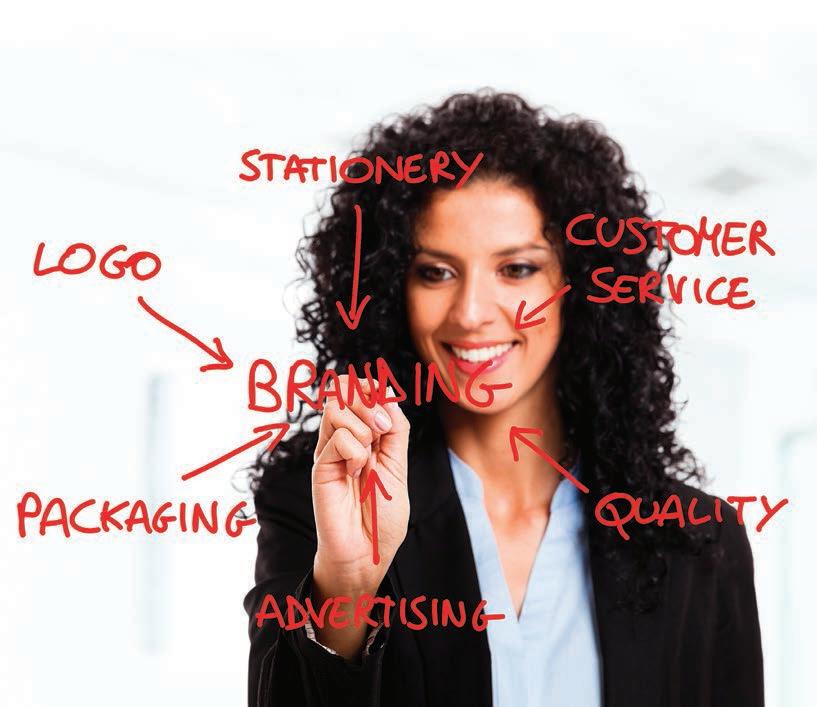
customers’ minds? If the picture is as compelling as the one for the world’s largest beverage company, you have succeeded in creating a “brand” that can add real dollars to your bottom line.
As attractive as a shiny brand sounds, ▲


14 American Drycleaner, July 2014 www.americandrycleaner.com
(Photo: ©iStockphoto/Minerva Studio)
a compelling brand that tells your ‘unique’ story about price, value and service
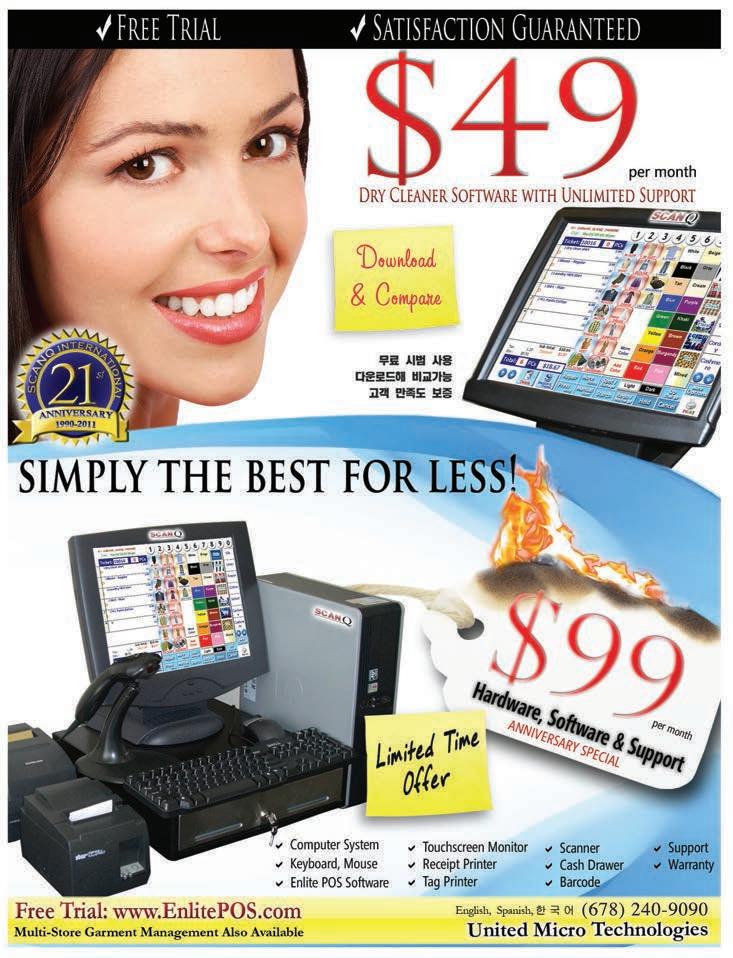
See us at Cleaners Showcase Booth 500
chances are your own could use a little pol ishing. Or maybe you have not given the idea of building your brand very much thought in the first place, given that you are not a giant corporation like the Coca-Cola Co. When it comes to working on your public image, though, size is not an issue.
“Branding is not just for big businesses,” says Ken Banks, CEO of KAB Marketing, a consulting firm in Florida’s Tampa Bay area. “It also helps small opera tors stand out and get noticed. Indeed, a strong brand can help any business compete with larger operators.”
A BUSINESS APART. What makes a successful brand? The best way to answer that question is to start by busting a common mis conception. Creating a brand has nothing to do with dreaming up a creative advertising campaign.
unique story. And that’s what makes a profit able brand.
“A brand differentiates you from all the other companies out there that offer the same products and services,” says Banks. “Brand ing is the essence—the DNA—that makes up your business.” And that DNA is of ne cessity all your own.

So how do you go about engineering a unique DNA? Start by finding out where your business is currently positioned in the marketplace. While market position can encompass many factors, Banks suggests starting with two that are of proven potency: 1) your price and 2) service reputation.
“A brand differentiates you from all the other companies out there that offer the same products and services. Branding is the essence—the DNA—that makes up your business.”
—Ken Banks, KAB Marketing
“When businesspeople think about a brand, they often equate it with a logo,” says Adele Cehrs, president of Epic Public Relations, Alexandria, Va. “But the best logo in the world means noth ing without a larger strategy. Good branding is really about repositioning your business in the marketplace.”
In other words, the famous Coke logo would do the company no good if the soft drink were not known as a brand that promised a dependably refreshing experi ence. Coke has created and communicated a
It’s important to get insights on these factors from your cus tomers rather than relying on your preconceptions. That’s be cause the two can be in conflict, and only by understanding and modifying the public perception can you increase sales.
To find out customer perceptions, just ask.
“Here is the amazing thing about custom ers,” says Banks. “Most are honest and will tell you how they feel. As a result, they can be your best source of information on where you stand relative to your competition.”
QUESTION TIME. Ask your customers ques tions that help to reveal their perceptions of your image when it comes to service and
16 American Drycleaner, July 2014 www.americandrycleaner.com ▲
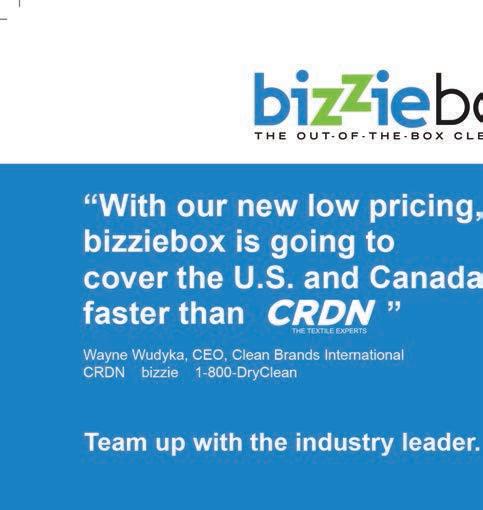
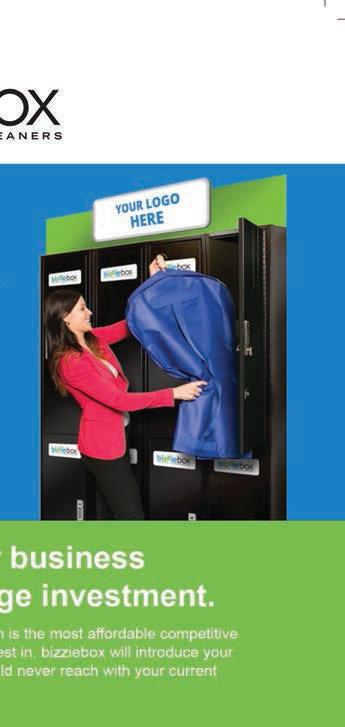
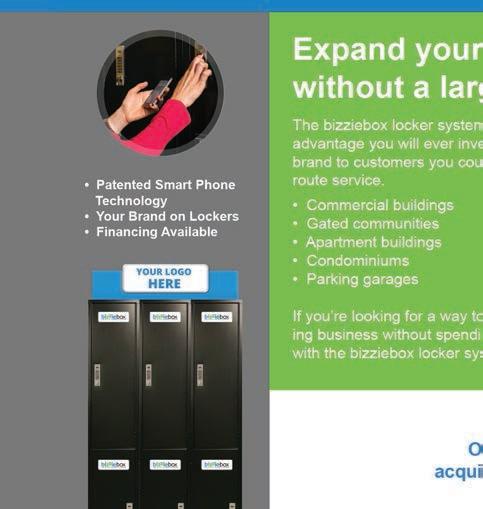
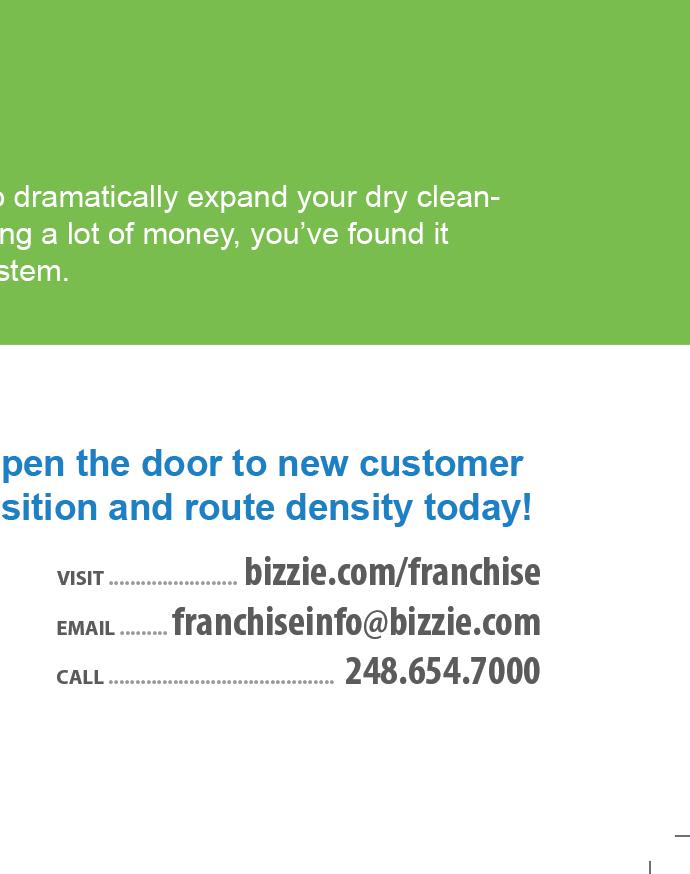

price, and their desires for the most attractive buying experience. Here are some examples:
• What brought you to us?
• Did you find what you wanted?
• Did you buy something else? Why?
• Were our prices as low as you desired?
• Did you receive the service you needed?
At the same time, ask questions that un cover unstated customer expectations. Here are some examples:
• What are the three top things you consider when you shop for dry cleaning?
• How important is price?
• How important is service, and what service in particular?
Then ask questions that help you measure where you are rela tive to your main competitors. How do they compare with you in the customers’ minds? Here are some examples:
says Banks.
Post-purchase interviews are great vehicles for this purpose, because the cus tomer experience is still fresh.
“Two weeks after buying, people tend to forget their impressions,” says Banks.
It’s best to interview customers while their memories are strong. And interviews need not take long, adds Banks. “It’s amaz ing what you can learn by talk ing with people for as little as five minutes.”
“Ask, ‘What do we need to do to build our brand? And how do we communicate the brand to the market?”
—Bob Phibbs, retail consultant
• If you are shopping for a dry cleaner, what is the first company that comes to mind?
• What is the first place you would choose to go with your garments?
• Why that company over XYZ Company? Price? Service?
You can pursue the same customer-centric research in areas beyond price and service. Some examples are product selection, quick turnaround time, and staff attitudes.
“From your customer surveys, you can discover your strengths and weaknesses,”
PICTURE THIS. Your interviews may show that customers most value selection and price, and feel—rightly or wrongly—that you are outmatched in these areas by your competitors. Or maybe they are looking for more engaged or knowledgeable employees, or better service in specific areas. Or perhaps they don’t even realize that you al ready offer those services they most desire. Whatever the results, you can get a firmer grasp of your market position by tracking them in a visual way.
“Start by creating a perceptual map with two parameters,” suggests Banks. “Put service on one axis and price on the other. Then use customer feedback to position your operation on each.”
Banks offers an illustrative example: Walmart would be positioned low on the price axis and not too high on the service

18 American Drycleaner, July 2014 www.americandrycleaner.com
axis, since the chain is a self-service opera tion. Draw up similar perceptual maps for other factors covered in your customer interviews. Then enter your competitors’ positions on these same maps.
A visual view of your customer data helps you recognize where your business stands in relation to the competition.
“Now is the time to ask: ‘Based on the results of our surveys, where does our brand need to go to gain market share?’” says Banks. “Perhaps, for example, you are not perceived to have as high a level of service as competitors. If so, your next step is to ask customers, in more exit interviews, what you need to do to change that perception.”
Watch especially for insights into where your competing dry cleaners are falling down. Maybe customers want a certain service that no one is offering. There’s your chance to fill the gap.
With your findings in place, follow your customers’ advice: Get your performance up, the word out, and watch the results show up in higher revenues. In the process, you will be creating a unique brand that conjures up in the minds of consumers an image of your company that is just what the public ordered—literally.
“By creating a story that moves your business to a better place on the perceptual maps, you will build market share,” says Banks.
KEEP IT UP. As valuable as all that customer research is, keep in mind that it is not
www.americandrycleaner.com
a one-shot deal.
“You don’t just do some research one year and then wait for 10 years and wonder why revenues are declining,” says Banks. “You have to monitor where customer pref erences are and where you are going on the perceptual map. If you move up or down, ask, ‘What did we do to cause that?’ Or maybe you moved because consumer tastes are changing. If so, you have to keep up with them.”
As the preceding comments suggest, creating a brand takes a lot of thought and effort.

“Too often business owners are tempted to throw money at the problem, dreaming up an exciting advertising program that creates more public confusion than revenues,” says Bob Phibbs, a retail consultant based in Cox sackie, N.Y.
Instead, obtain a deep understanding of customer desires and modify your business to meet them, says Phibbs. “Ask, ‘What do we need to do to build our brand? And how do we communicate the brand to the market?’”
The result of your work will be a com pelling image that rises up in the minds of consumers when they hear the name of your drycleaning business. And that can only mean more revenues and greater profits. O
Award-winning journalist Phillip M. Perry, who resides in New York City, is published widely in the fields of business management, workplace psychology and employment law, and his work is syndicated in scores of magazines nationwide.
American Drycleaner, July 2014
19
By Diana Vollmer




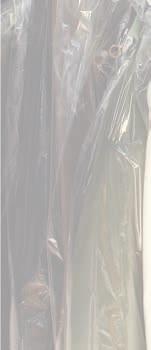

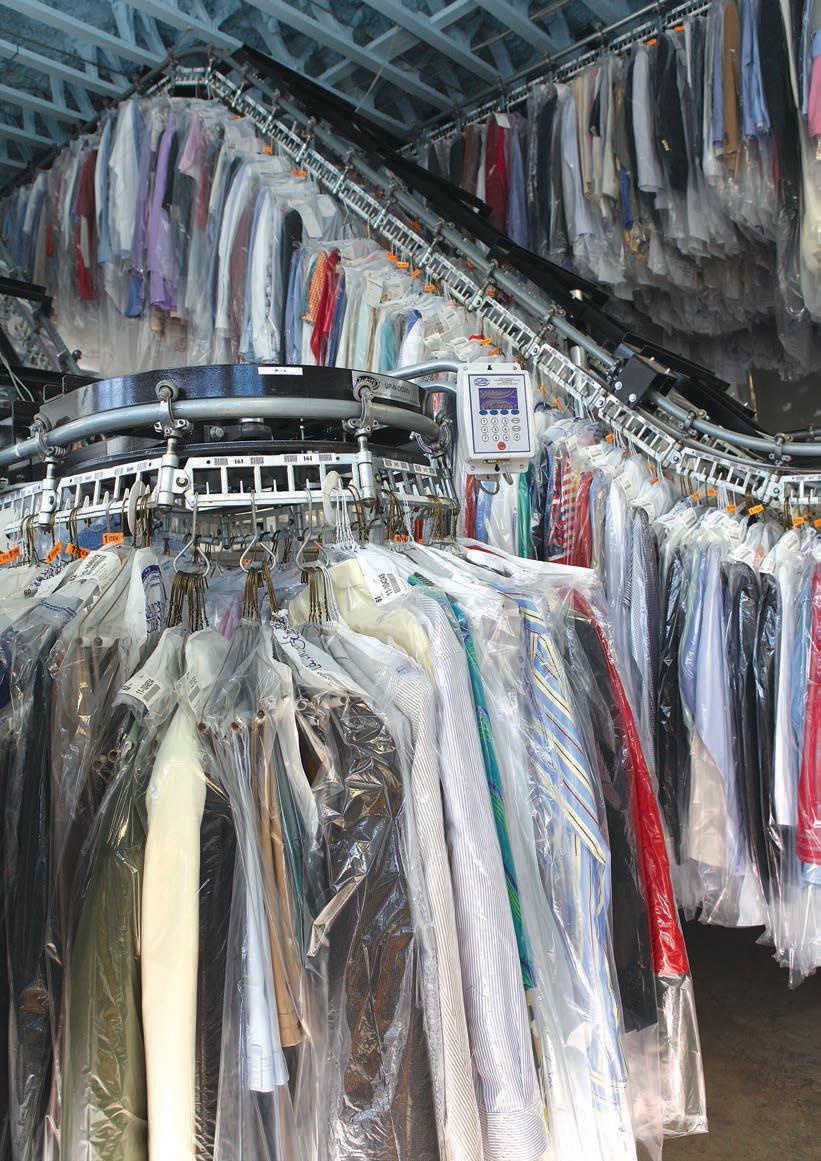
Automation: Will It Make Your Plant More Profitable? 20 American Drycleaner, July 2014 www.americandrycleaner.com A utomation is a continued topic of discussion with broadly varying opinions about the benefits and challenges of implementation. Benefits of automation in a drycleaning plant can be many, including: • aster check-in • aster service turnaround for some or all of your products • Higher pieces per operator hour PP H • Improved accuracy • Better customer service at the stores • Improved return on investment • ower labor cost • Better tracking and control • ewer “lost” garments • Ability to track item history • onsistency of pricing • Better capturing of specialcare fees • Or if you are highly regimented, all of the above ▲
(Photo: Rainbow Cleaners, Oxford, Miss.)
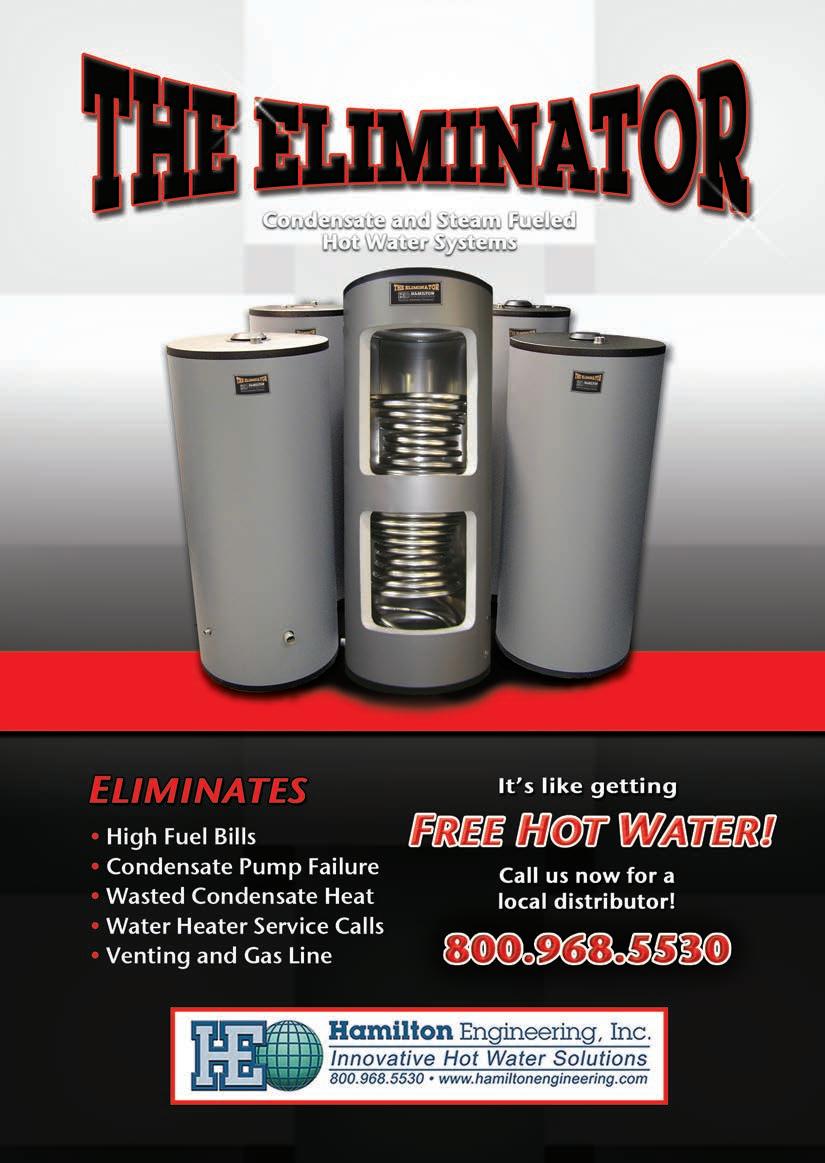
The appropriateness for automation in your plant is dependent on many factors:
• Number of employees
• Efficiency of current staff
• Availability of dependable workforce
• Number of pieces processed
• Required turnaround time
• Facility configuration
• Availability of funds (cash, loan or lease)
• Propensity for technology
• Availability of support
• Effectiveness of management
POTENTIAL BENEFITS.
Faster Check-In — Initially, bar coding will take slightly longer than traditional tagging because of the lack of familiarity with the process and the probable additional information you will want to capture during mark-in. Once the procedure becomes routine, the timing difference on initial mark-in will disappear.
After a substantial percentage of your work is bar-coded, then mark-in will become much faster because many items will only need to be scanned. (Caution: Spot-check for accuracy in pricing. The detailing at the first mark-in will follow the item forever, so it is essential that the description be accurate to ensure accurate pricing.)
The ongoing percentage of garments that are already bar-coded at drop-off will be proportionate to your percentage of shirts and pants since they are the most commonly returned items.
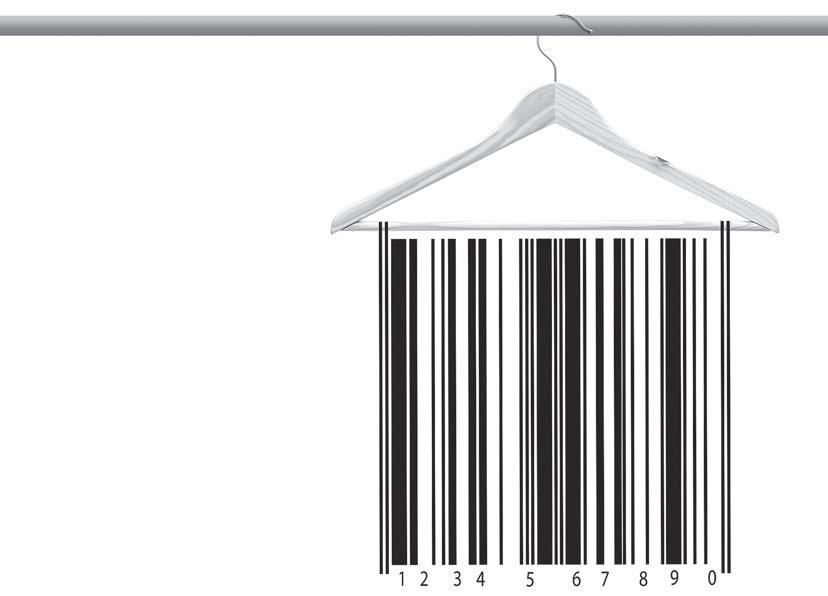
Faster Service Turnaround — Bar
American Drycleaner, July 2014
coding provides for much faster assembly and sorting for distribution, thereby bringing production to completion earlier and getting the vans out sooner as well. This is especially beneficial in operations with same-day service and/or those that service guest clothing in hotels.
Higher PPOH (Pieces per Operator Hour) — When any part of the production process is sped up, the entire production efficiency is increased. There is less waiting for items to process and less waiting for finished items to move through assembly. The total PPOH of the workforce increases.
Improved Accuracy — One of the biggest advantages to bar coding is im-
22
www.americandrycleaner.com
(Photo:
©iStockphoto/bach005)
proved accuracy in assembly. It reduces the possibility for human error and makes tracking “lost,” out-of-sequence items much easier, especially if the items are scanned at each process station along the way.
Better Customer Service at the Stores — When the orders are returned to the stores earlier, there is more time to rack the work before customers return. The racking and retrieval goes much faster, saving customers time.
The mark-in process also goes faster when bar codes can be scanned so the work can go to the plant earlier, leaving more time for proper processing and thorough inspection to maintain quality standards.
Improved Return on Investment (ROI) — Since labor is the single most costly expense, producing the same work with less labor will increase profit as long as the cost to reduce the labor has a higher return on investment (ROI). That is why each investment in automation (or any other purpose) should be carefully weighed based on the specific return on that investment. A break-even point of one to two years usually indicates desirability, whereas a 5-to-10-year return is likely not a wise move.
Lower Cost of Labor — The cost savings should be apparent in reduced mark-in time, providing labor savings in stores that are busy enough to require multiple CSRs to meet customer demand. The savings should be gained in central mark-in operations as well.
More significantly, the cost savings will be attained in the plant due to faster assembly and distribution sorting.
www.americandrycleaner.com
The other labor savings are achieved because the “mad scramble” at the end of the day to find the “missing” pieces is reduced. Because the progress is tracked through the stations in the plant, operators can determine the current location of items immediately.
Lastly, staff can be released earlier in the day because the exact needs can be determined by tracking and managing the labor vs. the “wait and see what we need done” approach.
Better Tracking and Control — Management of labor becomes a simpler process when a POS system can project the workload. Scheduling becomes predict able instead of an exercise in guesswork, or habit.
The information is available so that clients can be kept informed about issues with their orders, such as being given a choice of whether or not to allow more time if needed for proper care.
Management of labor becomes a simpler process when a POS system can project the workload.

Fewer “Lost” Garments — “Lost/ missing” garments require an inordinate amount of time and labor in the plant, especially at the end of the day when everything else is being held up waiting for a couple of items that are due to go out.
All hands on deck to look for a piece or two is a highly expensive solution. Combining the labor costs for the staff members who are looking for the items, the cost of the waiting time for the drivers, and ▲
American Drycleaner, July 2014 23
the cost of delayed inspection, assembly and bagging can result in a high total, especially if any or all of the employees are running into overtime.
This does not take into consideration the unknown expense of customer disappointment because the quality standard slips in the rush to get the work out the door.
Ability to Track Item History — So often, the customer with a claim is viewed with skepticism because the damaged shirt/pant/dress/duvet is professed to be “new.” Bar coding can possibly clarify the item age based on the number of times it has been processed.
Many times, the customer believes the claim, but will become more agreeable when shown the actual age or number of times the item has been processed.
This tracking can also allow you to
provide a proactive service to the client by alerting them in advance that a favorite item may be nearing replacement time.
Consistency of Pricing — When a customer brings in the same garment multiple times and it is marked in by multiple employees, the likelihood of being priced differently each time is quite high. Bar coding will eliminate this variance in pricing.
Of course, it is important to price items correctly the first time or the error will follow it forever. For this reason, periodic spot checks are highly recommended to ensure accuracy and that special-care fees are captured.
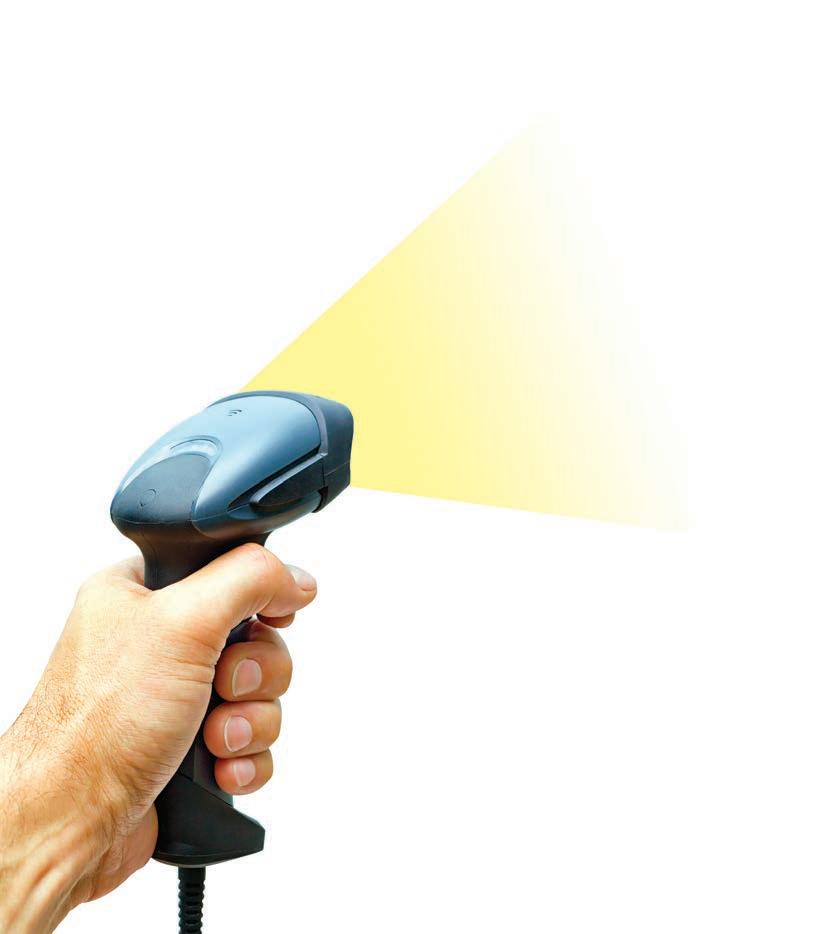
Better Capturing of Special-Care Fees — Depending upon the complexity of the base price list, special-care fees average approximately 15% of total sales. Accurate initial bar coding will capture this additional pricing profit. To best ensure that special-care fees are captured, make descriptions mandatory with no default to “regular.”
This is particularly evident during price increases when CSRs tend to “protect” customers from the price increase. It is also essential when new personnel first begin to mark-in work.
APPROPRIATENESS FOR YOUR PLAN. Before making a decision to automate or not, take a candid look at your current operation to determine if the investment is warranted.
Number of Employees — The savings from automation are easier to capture with more staff. If there are two to four production employees, they are likely crosstrained and spend a small portion of each day in mark-in and/or assembly. If you will not save at least one employee with
24
American Drycleaner, July 2014
www.americandrycleaner.com
▲
(Photo: ©iStockphoto/Plus69)
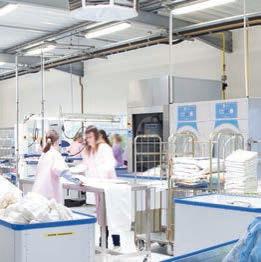
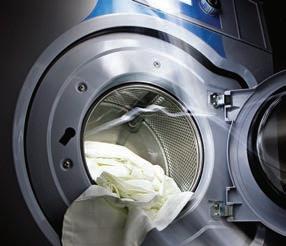
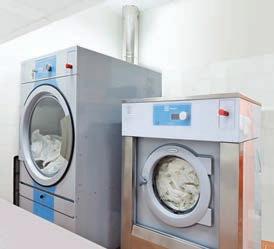





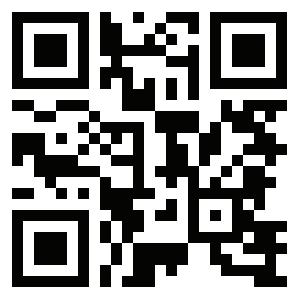
Pluslux (866) 575-1010 www.plusluxllc.com • New laundry equipment with no capital expense • No long-term lease or contract • Huge savings on chemicals, water, & energy • Lifetime Parts & Service Warranty • Superior quality and longer linen life No money down. Pay only for what you use! Never purchase laundry equipment again! P rofessional L aundry U tility S ervice Scan here to learn more about PLUS - and how it can solve your laundry problems!
automation, the ROI for fully automated assembly is likely not to be enough to warrant the shift.
However, even in small plants there are savings to be captured with bar coding and assisted assembly.
Efficiency of Your Current Staff — If your staff is performing under benchmark on pieces per operator hour and other steps have not improved the efficiency, then automation may be desirable to reduce labor cost.
If the return on investment is two years or less, then the investment in automation is likely justified.
Availability of Dependable Workforce — Do you have a ready supply of efficient employees? If not, automating processes may be necessary for dependable timely processing. Machines don’t have personal reasons for not coming to work.
Break-Even Point — If the return on your investment is two years or less, then the investment in automation is likely justified.
Number of Pieces Processed — Are you processing 800 pieces per day or more? If so, the ROI investment calculation is a logical step to determine your break-even point.
Required Turnaround Time — Do you have high demand for same-day service or for hotel guest service? Automation will assist you in meeting the deadlines.
Facility Configuration — Is there a clear path of progress through your plant or is equipment placed wherever there is a nook that can be filled? Automated
assembly or assisted assembly will free up assembly space, but it does need allocated space for maximum efficiency.
Availability of Funds — Regardless of the efficiency to be gained, for either full or partial automation, funds—whether available cash, loan or lease funds—must be available for a certain amount of conversion investment. Assisted assembly will require a minimum amount of heat-seal equipment, a supply of bar codes, staff training, assembly rail, and POS integration. This is modest compared to full automation, which requires a significant outlay.
Propensity for Technology — There is always an adjustment period for any new process. The integration of equipment and POS requires some understanding of both. This will be more seamless if you are inclined toward technology.
Availability of Support — For a seamless conversion, someone in the company (or readily available to it) needs to be involved.
Effectiveness of Management — Constant disciplined management can achieve high productivity without automation, but consistently efficient management is relatively rare in the cleaning industry. Automation can assist in efficiency management.
Once you have weighed the factors described, you can more easily determine if automation is an appropriate investment for you. O
Diana Vollmer is managing director at Methods for Management (MfM) Inc., which has served the drycleaning and laundry industry with affordable management expertise for improved profitability since 1953. For assistance with automation returnon-investment calculations and decisions, contact Vollmer at dvollmer@mfmi.com or 415-577-6544.
American Drycleaner, July 2014 www.americandrycleaner.com
26
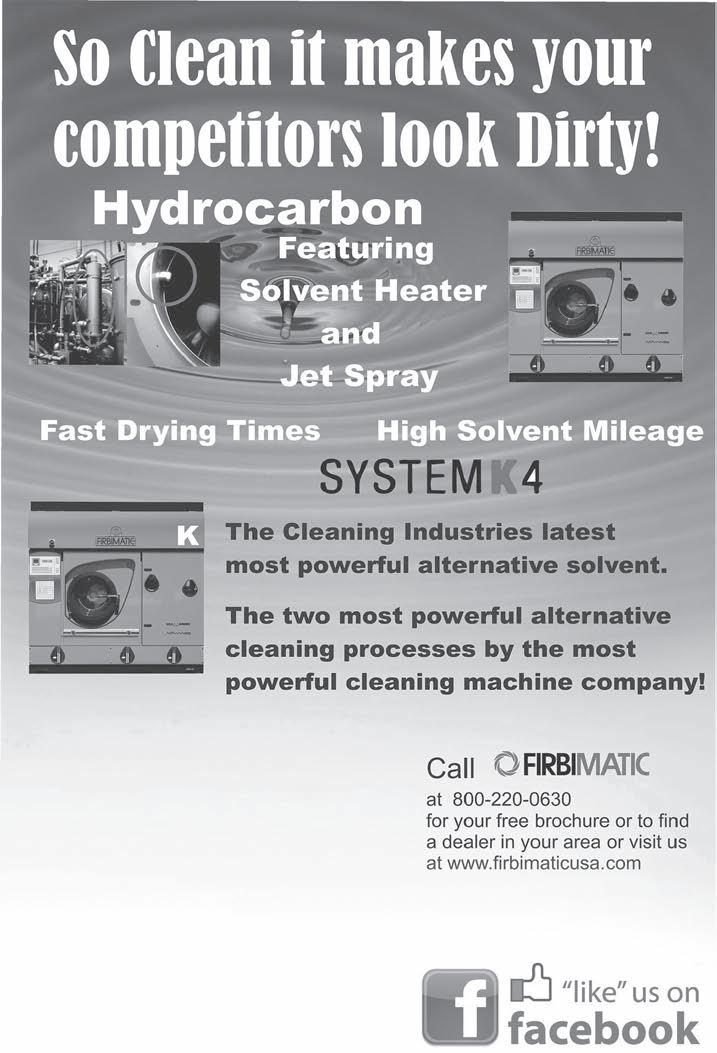
M. W. Equipment Co. 1130 N Pacific Avenue Glendale, CA 91202 Phone: 818-768-0207 Fax: 818-768-3191 Email: 2mwequipment@gmail.com
By Bruce Beggs, Editorial Director
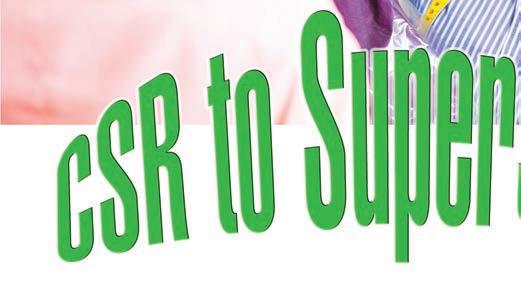
It’s not unusual for dry cleaners to invest in their plants, to renovate their physical space or to add equipment or computerization, sometimes at great cost. From the moment they make such an investment, these items depreciate in value, says Christopher White, executive director of independent drycleaning certification organization America’s Best Cleaners. But not so with a dry cleaner’s staff.
“Everything you buy for your business depreciates once you buy it, except for the humans that you bring [on board]. Humans are the only thing you can appreciate in value. You can develop that asset.”
Speaking to an audience at last month’s South Eastern Fabricare Association’s (SEFA) Southern DryCleaners & Launderers Show, White pointed out the positions in a drycleaning business that directly effect revenue: route personnel and frontcounter staff.
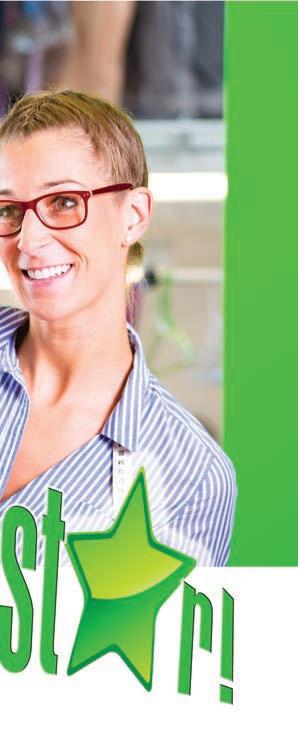

28 American Drycleaner, July 2014 www.americandrycleaner.com
▲
be looking for great customer-service talent to represent your drycleaning business
(Photo: © iStockphoto/kzenon)
Always
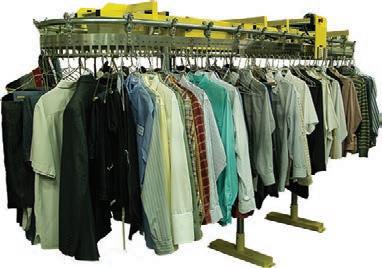

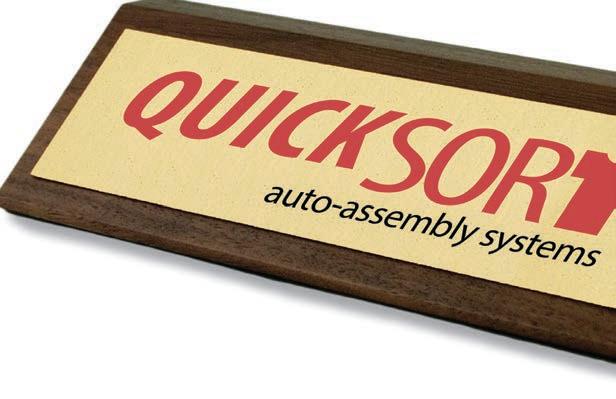
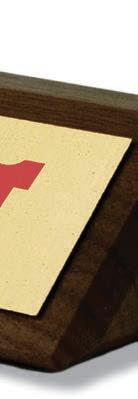
P. O. Box 241610 • Little Rock, AR 72223 501-216-8093 • www.quicksortac.com You buy new equipment all the time.
itself
it
QuickSort.
paid positions
your efficiency.
your team. MEET YOUR NEW EFFICIENCY EXPERT.
But nothing pays for
the minute you start using
like
Replace up to two
and maximize
QuickSort. A vital part of
As such, you should expect them to interact with your clients in a positive way. “We all have our ‘favorite’ CSR (customer service representative). We just bring them in, and they ‘just work here.’ That’s not what we want. We want superstars. These are the people that ‘touch’ your clients. They represent the values of your brand.”
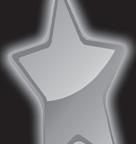
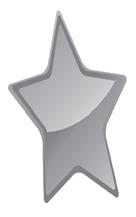

But all too often, dry cleaners hire someone to fill one of these important positions “if they have a pulse,” says White, who spent 11 years as director of operations for New York-based custom couture cleaner Madame Paulette.
the standard work experience that every job application asks for, White says.

“Why do I want to know if they do charitable work? It shows their character. Why do I want to know what their favorite restaurant is? What kind of experience are they used to feeling in the service industry?”
Their answers may indicate their willingness and desire to serve others.
The most important attribute to look for in a CSR candidate is a positive attitude, according to White.
“When do you hire? When the girl quits. When do you hire? When the guy doesn’t show up. You’re scrambling to find someone to fill that void because you don’t want to go to the store, or to have to close that store, or shift managers, or pay overtime for people.”
You should be in hiring mode at all times, he advises. “If you see someone that comes in, looks great and fits your value, find a way to slot them in. … Always be looking for great talent. It’s out there.”
A DESIRE TO SERVE. When interviewing CSR candidates, asking questions about an applicant’s life experience—Do you do any charitable work? Where do you like to shop? What’s the nicest hotel you have stayed at?—can provide insight beyond
The most important attribute to look for in a CSR candidate is a positive attitude. “I’ve yet to find someone who can train that,” White says. “You have to look for that. That’s why we ask those key questions. … the people you put in front of your customers share those values naturally, and then we train them [on] the technical aspects of the business.”
CONSUMER NEEDS. Drycleaning customers have needs that are easy to identify—they want clean and pressed clothes delivered in a timely fashion—but they also have inherent psychological needs—a sense of security, appreciation, and importance— that, if met, can place your company above all others in their eyes.
“We’re one of the few industries where we ‘touch’ our customers once, twice a week, with a very personal item,” White says. “We’re part of their routine. We’re part of their lifestyle. They want to be appreciated. They don’t want conflict. They want you to understand that they’re important to you.”
For example, if your CSRs are not complimenting customers on their garments, you’re missing a huge opportunity to build your relationship with them.
How should you define a client? They are, according to White:
American Drycleaner, July 2014 www.americandrycleaner.com
30
• The most important person in your business
• Not dependent on you
• Not an interruption of your work
• A part of your business
• Not someone with whom to argue or match wits
• The lifeblood of your business
“Every time I ‘touch’ them, I need to earn them,” he says.
Who are your potential clients? They include business professionals, actors, sports figures, entertainers, designers, politicians, tourists, the neighbors next door, and others. “One thing they all have is influence,” warns White, because any subpar experience with your cleaner can become a scathing critique posted to a social network site for all to see.
CUSTOMER EXPERIENCE. Customers remember and value great experiences that demonstrate deep understanding and respect, White says. So what kind of experience are you providing?
“If your value mission statement is to provide a phenomenal experience for your customers, then that should be involved in every decision you make in your business, whether it’s how we do shirts, how we package shirts, to how we clean the floor, how we make it look.”
When doing site inspections, White is surprised to see how many owners enter their business from the rear, never through the front door. “Every day, you should be walking through your store with the eyes of your consumer,” he says.
The bell rings, signaling that another customer has entered your store. This, says White, is what you should see from your CSR:
www.americandrycleaner.com
• A smile
• A friendly greeting
• Engaging conversation
• An appreciation for people
• A willingness to help
• A recognition of customer needs
• An offer of a way to solve a problem
“These are values that you should be checking off as you’re interviewing someone, that they have or they’re going to be successful in,” White says.
How important are these traits in the eyes of a customer? White’s firm collected “Consumer Disposition” data from a nationwide analysis of approximately 1,400 “secret” shops. With all other factors scored the same, an experience during which the CSR smiled garnered a 14% higher rating, he says. Using the customer’s name during the course of the transaction earned a score that was 18.3% higher than experiences during which the CSR did not call the customer by name.
CSR BASICS. Dry cleaning is the “service division of the fashion industry,” so a CSR’s personal appearance sets an important tone for your business: • Is their uniform or garments clean and wrinkle-free? • Is their hair neat? • Do they smell fresh? • Are their hands clean? • What about their breath? • Are they wearing the correct footwear?
White says you should constantly reinforce these customer-centric behaviors in your CSRs:
• Smile
• Stand up straight • Speak clearly
American Drycleaner, July 2014 31
▲
• Be e pressive
• isten

• Ask uestions
• Take on the challenge
• ollow through
• Take pride in the work
• how poise
A ’s ob often involves speaking with customers by phone. They should smile, be alert, and speak naturally, White advises.
“We want to personali e conversations. We don’t want to process people, we want to engage them, whether they’re in front of us or on the phone.”
Train your s to avoid making some common phone mistakes putting a caller on hold without their permission keeping a caller on hold too long cutting a call short speaking too fast and using slang.
If it’s necessary to take a phone message, the should note the date time the call was received, the name of the calling party, the customer’s phone number including e tension , and the issue the call was regarding.
When communicating with clients using e-mail or via te t, make sure your
s understand the rules of proper business writing, grammar and spelling. Your young may understand what their “ r clothes r ready pu” te t message means, but your customer may not be able to decipher it as “Your clothes are ready for pickup.”
Beyond the basic customer service eti uette is the drycleaning knowledge and support that can separate your business from the one down the street.
• Do your s know every service that your business provides so they can suggest them to your clients?
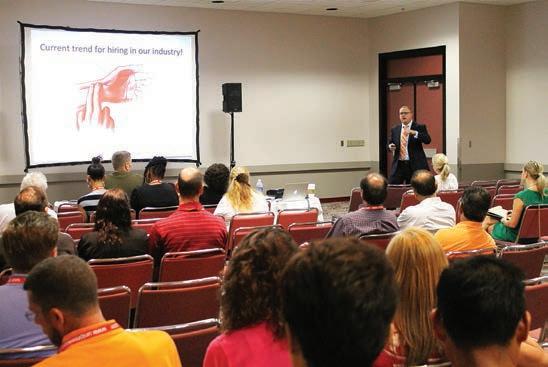
• an your s read and understand care labels?
• Do they know and understand basic fashion terms, like “fibers,” “yarns,” “weaves,” “fabrics,” “colorings” and “embellishments”?
• Are they familiar with the latest apparel styles shapes, silhouettes and construction?
White recently scanned Yelp, a wellknown customer review website, looking for positive reviews of dry cleaners. f positive reviews, “ consistently had the word friendly,’ helpful’ or knowledgeable’ in it,” he says. “Didn’t say anything about taking the stain out. Didn’t say it was on time. They say, friendly,’ helpful,’ knowledgeable.’”
Better educated and trained s evolve from being seen by clients as an “order taker” to a “garment care consultant” they value and trust, White says. O
American Drycleaner, July 2014 www.americandrycleaner.com
32
Christopher White, executive director of America’s Best Cleaners, urges dry cleaners to set their CSR recruiting sights higher than considering any applicant with “a pulse.” (Photo: Bruce Beggs)
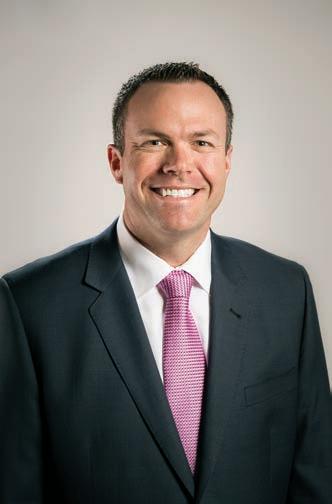
Spend a day with Dav e Coyle, owner of • $5 million+ annual sales • 17 locations & route specialist • Fully automated production • 78 team members • Highly profitable operations • Aggressive marketer Contact Dave: (316) 650-5125 dcoyle@inthebagcleaners.com Industry Industry Expert! Expert! Learn from an www.inthebagcleaners.com Serving the Midwest Learn from an
T apping on Sentiment
The last six years—the time during which I have written this column for American Drycleaner—have been interesting for the garment care professional. There have been new immersion solutions, new chemical tools for stain removal, and even some major advances in machine design. But the goal remains the same: textile restoration, for the consumer, at a profit.
There have been times when I have gotten the distinct feeling that I am going against the prevailing current, but working to exceed expectations has served me extremely well as a business model. I have some ideas about places where you can diversify your cash flow.
I have long been a supporter of the use of water in garment care. There are many items that can be cleaned easier, cheaper and with a reduced waste stream by using water. Today’s marketplace is filled with fine washables. A water care label and the available chemical tools give the industry a much-needed influx of sales.
Customers are buying and wearing “throwback” athletic gear. After that investment, the customer could use
To find past Spotting Tips columns or share this month’s with your colleagues, visit www.americandrycleaner.com.
professional service to keep the item clean and looking pristine.
While casual dress has been seen in a negative light, cleaning and finishing embroidered-logo golf shirts can supply added cash to weekly sales.
Take a trip to the mall and look around at the number of screen-printed T-shirts around you—more untapped cash flow.
All of these garments are relatively routine to handle.
The embroidered golf shirts and the painted T-shirts can be turned insideout and cleaned in water using a lowpH detergent and softener/conditioner. The throwback gear should be turned inside-out and placed in a net bag for cleaning. They should be hung to dry, overnight, on plastic hangers. Caring for throwback gear is a premium service, as the customer has an investment of both money and sentiment in those items. One or two runs in an inverter drive washer, with the proper chemistry, can add dollars to the cash register.
Another often-overlooked source of income is caring for wedding gowns. When you are able to impress the mother of the bride by restoring the wedding dress, you also gain a source of word-of-mouth advertising.
Little effort achieves little return. By applying all your expertise, a
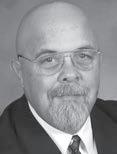

SPOTTING T IP S 34
American Drycleaner, July 2014 www.americandrycleaner.com
Martin Young
▲

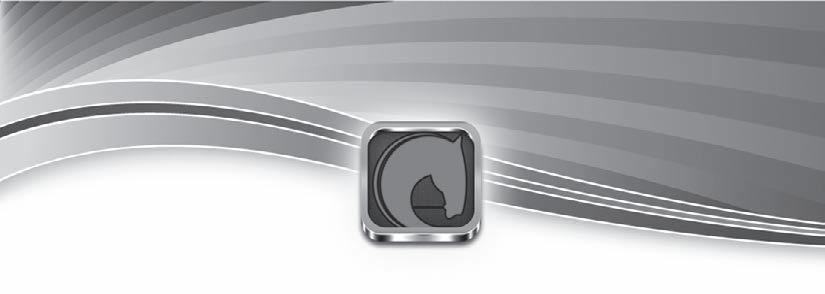

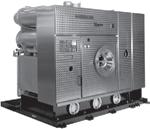
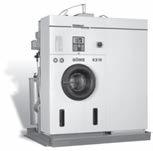
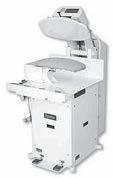

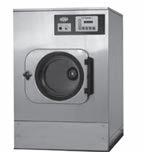
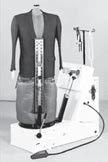



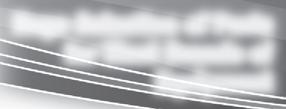








Multimatic 30-lb. SL-30 $18,500* Forenta Dry Cleaning Topper (used) $3,600* Form Finisher $3,250* Forenta A19VS Topper $3,895* Huebsch 75-lb. Steam Dryer $3,700* Lattner 20hp Boiler $11,900* Milnor 60-lb. Washer $6,450* Bowe 40 Hydrocarbon Machine $28,500* New & Used Equipment for Drycleaning & Laundry Huge Selection of Parts for Most Brands of Equipment Prices valid until August 1, 2014 | *Freight Not Included MUSTANG enterprises 1/2” Steam Traps $35 each, 5 trap minimum 86 6 - 73 4 - 364 4 Monthly Specials Online: MustangEnterprises.com
picked up during wearing.
A wedding dress of 100% polyester, with a care label mentioning water, is a good candidate for wet cleaning. After wetcleaning a wedding dress, it is best to hang the garment to dry under tension; this will greatly reduce the time needed to steam/finish the dress.
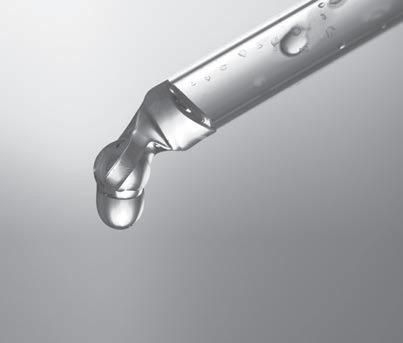
Stain removal will be quicker and less expensive when undertaken with knowledge and due diligence, not in the shadow of uninformed fear.
wedding dress, with its sentimental value, is an excellent source of additional income.
But gaining good results with a wedding dress requires effort. Effort implies time, and there are some business models that are based on using the least amount of time and effort to achieve some level of compensation. With wedding dresses, you should put in the time to restore the garment. This usually involves compensation, much like other services, based on time and materials.
Such a dress should be hung on a strong hanger and then extended to its full length for inspection and pre-spotting. This is done by placing a safety pin in the train at its longest point and then placing the safety pin over the neck of a hanger, then hanging the train in the extended position. With the tail/train hanging out of the way, place the bodice on the spotting board and pre-spot for perspiration, body oils and makeup. Hang the bodice with the dress in the extended position. Inspect the entire hemline and use a spray spotter and leveling spotter to treat the wax and dirt
Many cleaners may have abandoned dry-side chemical tools, but that does not reduce the need to remove paint, glue and makeup. If you are continuing to use a manifested hazardous-waste service and your state or municipality has not specifically banned a chemical tool, you should feel little pressure to discontinue use at this late date. These chemically soluble stains have not disappeared, and the need to assist some of the alternative solutions in removing them has increased.
Use chemical tools that are compatible with your system, but keep in mind that the consumer is paying the bills. Environmental regulations must be obeyed. Stain removal will be quicker and less expensive when undertaken with knowledge and due diligence, not in the shadow of uninformed fear. The days of poor “housekeeping” are long gone, and reckless handling of chemicals can and will lead to contamination and fines. Be professional in all you do and give your customer professional results.
Complete and present your finished garments in such a manner that the competition will fear you, rather than you fearing the competition. O
Martin L. Young Jr. has been an industry consultant and trainer for almost 20 years, and a member of various stakeholder groups on environmental issues. He grew up in his parents’ plant in Con cord, N.C., Young Cleaners, which he operates to this day. Contact him by phone at 704-786-3011, e-mail mayoung@vnet.net.
American Drycleaner, July 2014 www.americandrycleaner.com
36
(Photo: © iStockphoto/Romanchuck)
Man does not live by print alone.
(Nor woman either.) American Drycleaner can now be viewed on tablets and other mobile devices – great ways to stay on top of the latest industry news and updates. www.americandrycleaner.com
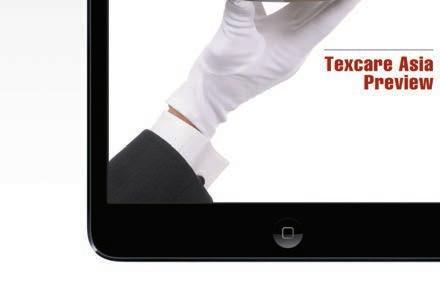

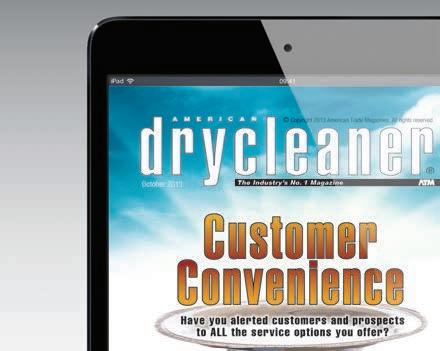
The
number 1 magazine
industry’s
A checklist to help make sure your drycleaning business is up to date and in compliance with employment regulations
 By Bruce Beggs, Editorial Director
By Bruce Beggs, Editorial Director
It’s vital that every business—including drycleaning operations— stay up to date and in compliance with federal and state employment regulations, and that they use “best practices” in terms of policies, procedures, manuals and documents to hire and retain good employees and motivate them to superior performance, according to Dr. Raleigh F. (Sandy) Seay Jr., chairman of Seay Management Consultants.
Seay’s Orlando, Fla., firm has maintained a 30-year-plus partnership with the South Eastern Fabricare Association (SEFA), providing its members with free or discounted human resources management consulting services.

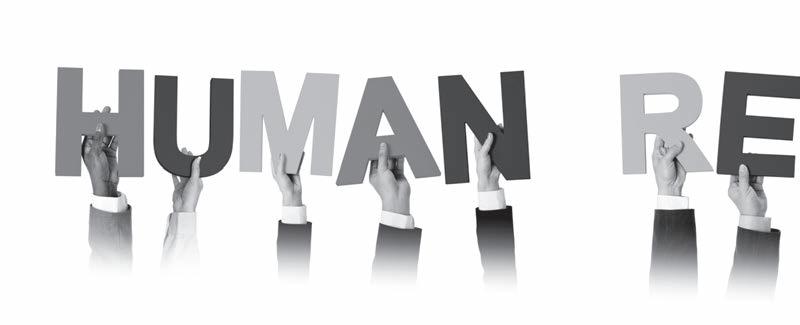
U.S. businesses are governed by many state and federal employment regulations. Wages and hours; equal job opportunities; maternity leave; and
disability are just a few of the areas always under scrutiny, he says.
“America has more of those regulations than any other country in the world,” Seay says. “When it comes to those regulations, and the decisions that you have to make with your employees, what’s logical is not always what’s lawful.
“It’s possible, and even likely, I would say, to make a … decision that makes perfect business sense but it would be contrary to one of the regulations.”
Speaking during SEFA’s Southern DryCleaners & Launderers Show late last month in Jacksonville, Fla., Seay shared a checklist of 20 human resources “flash points” with which every employer should be aware.
EMPLOYEE HANDBOOK. It is the fundamental employment document, because it describes how well you’ll handle the work issues that arise with your employees. It should be comprehensive and detailed, Seay says: “[It’s] got everything in it that you need to have but nothing in it that’ll get you in trouble.”
38 American Drycleaner, July 2014 www.americandrycleaner.com
Management Flash
Some policies it should include are:

• Dress Code — Where once a business owner worried only about an employee coming to work “looking like they just got out of bed,” Seay says, today’s owner has to be concerned about things like extreme hair color, potentially offensive tattoos, scents/ aromas (body washes/perfumes/ colognes) that bother other employees, and body piercings, and have policies governing what is acceptable and what is not.
An attendee asked about having policies that differ by department: customer service representative vs. presser or spotter, for example.
“It’s always better to have the same policy for everybody, but if you can’t do that, you can certainly have a different policy for a different department, as long as everyone within that department is treated the same,” Seay says.
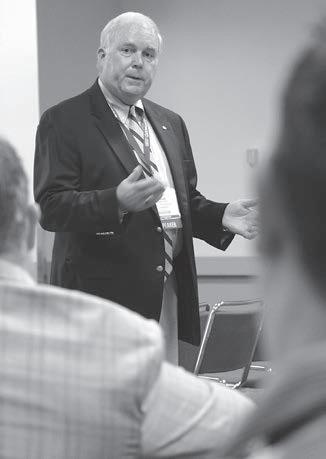
• Cellphone/E-Mail/Internet Usage at Work — If an employee brings a smartphone to work and begins to use it for personal calls, texts and/or e-mails, then that distracts from their productivity, Seay says.
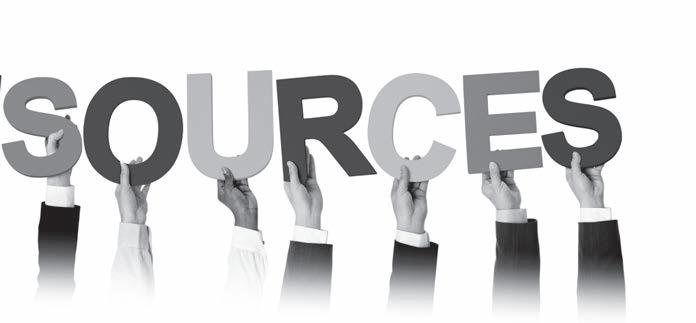
“We need to have a policy which de-
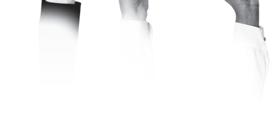
scribes the circumstances under which a person can use a telephone like that at work,” he says. But in light of personal security and maintaining the ability to communicate with family members quickly, “I would not want to say, ‘Do not allow your employees to have cell phones at work.’ That would not be my first recommendation. I would say, “Let’s develop some guidelines.’”

www.americandrycleaner.com
39
American Drycleaner, July 2014
(Photo: © iStockphoto/Robert Churchill)
▲
Human resources management consultant Sandy Seay speaks to an audience during SEFA’s Southern DryCleaners & Launderers Show. (Photo: Bruce Beggs)
Points
It is appropriate to limit usage to before/after work, during breaks/meals, and in event of emergency, Seay says.
• Social Relationships at Work — Seay strongly favors policies prohibiting supervisors from dating hourly employees. “A supervisor dating a rank-and-file employee is … trouble waiting to happen.”





SOCIAL NETWORKING POLICY. It’s wise to prohibit or restrict employees from accessing social networking sites (Facebook, Twitter, etc.) during work, and employers should be aware that some material that employees post may be “protected concerted activity,” even if it’s critical of management.
“Tell your supervisors and managers to stay off the personal Facebook accounts of your employees,” Seay says, adding, “It’s going to get us into trouble, and there’s nothing good to be gained by it.”
SEXUAL HARASSMENT AWARENESS TRAINING. Build a wall of protection around your company by having training every year to 18 months for your management team and your employees, Seay advises.
ANTI-BULLYING. The act of “bullying” has taken on more emotional and relational undertones as social networking has grown more popular, Seay says. Develop a policy that clearly defines bullying of any kind as unacceptable, and make sure you have a way for employees to report abuses confidentially and anonymously.
DRUG-FREE WORKPLACE PROGRAM. Establishing such a program will assist you in
resolving potential drug issues at work, and may lower your workers’ compensation premiums, according to Seay.
UPDATE YOUR AFFIRMATIVE ACTION PLAN. Covered employers (those with 50 employees and federal government contracts of $50,000 or more) must complete an annual update of its Affirmative Action plan, Seay says.
REPORT SUBMISSIONS. You may want to highlight Sept. 30 on your calendar—that is the date that certain businesses must submit their EEO-1 Report and VETS 100 reports; companies must do this if they have 100 employees, or if they have 50 employees and an Affirmative Action plan, Seay says.
NEW HIRES. Make sure that you report your new hires regularly to your state’s employment agency database.

DETAILED JOB DESCRIPTIONS. It’s important to have detailed descriptions for every job, in compliance with the Americans with Disabilities Act (ADA), the Equal Employment Opportunity Commission (EEOC) and generally accepted principles of human resources management, says Seay.

MANAGEMENT TRAINING. Consider conducting management training sessions on important subjects such how to counsel employees and dismiss them (when necessary), how to conduct performance appraisals, how to handle difficult employees, how to motivate employees to achieve superior performance, and ethics in the workplace.
40 American Drycleaner, July 2014 www.americandrycleaner.com

▲
■ Have you invested in renovations, equipment upgrades, or a whole new drycleaning plant? Enter your plant in the 54th Annual American Drycleaner Plant Design Awards!
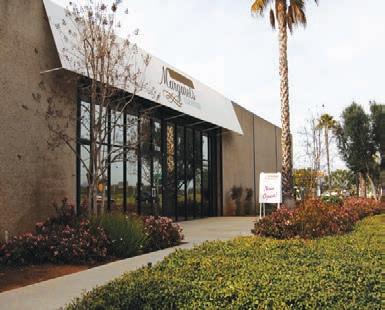


Every year, the magazine honors the best new plants and renovation projects, recognizing them for appearance, efficiency, convenience and comfort. Your plant could be next!
You can find our online entry form at: https://americandrycleaner.com/54thannual-plant-design-awards-entry-form






■ Fill out the form completely and upload a layout (blueprint or sketch) and several photos (300 dpi digital files are preferred, but color photos will also suffice) that show off the features that make your drycleaning plant an excellent place to do business.


And include any information you feel is relevant to the way your plant’s design attracts customers and fulfills your production needs. The more detailed the entry, the better!




Perhaps you’ll join the likes of previous grand prize-winners Corona Del Mar (CDM) Cleaners, Newport Beach, Calif.; Rainbow Cleaners, Oxford, Miss.; and Margaret’s Cleaners, San Diego, Calif., at the pinnacle of the drycleaning industry.




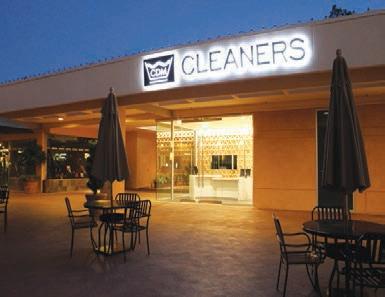
But you can’t win if you don’t enter!




■ Entries are subject to verification. Contact Editorial Director Bruce Beggs, 312-361-1683, bbeggs@ americantrademagazines.com, with any questions.
American Drycleaner is accepting entries until Friday, Oct. 3. Good luck!



2014 Best Plant Design Newport Beach, Calif. Rainbow Cleaners • Oxford, Miss. 2012 Best Plant Design Margaret’s Cleaners • SanDiego,Calif.
54
Celebrating
Years!
EMPLOYMENT POSTERS. Make certain that you have all required employment posters and place them in prominent locations. Seay says federal regulations require six posters, while various states require about five or six more. They are widely available for online download at no charge from various employment regulatory agencies. Employers are subject to fines if they do not display the notices.
I-9 FORMS. For each employee, a company must have an Employment Eligibility Verification Form I-9 (authorizing them to work in the United States). Make sure your I-9 forms are present for all employees and are completed.
In particular, Seay says, you must complete columns A, B and C in the middle of the page, make copies of the verification documents and staple them to the I-9 Form, and file the I-9 Forms in a location other than the regular employee file.
EMPLOYEE FILES. Employers should maintain two files for each employee: one is a regular personnel file that contains the person’s job application and other job-related forms, the other is a confidential administrative file that contains any paperwork that has EEOC/ADA or privacy components. The I-9 form, which is often accompanied by a copy of the person’s driver’s license, should be kept in the administrative file, Seay says.
EMPLOYEE COMMUNICATIONS. Employees have a “natural desire” to know what’s going on at their company, so it’s important to have a clear line of communication with them, Seay says. This might include programs such as an “open door” policy,
an employee complaint procedure, bulletin boards and an employee newsletter.
“What you don’t want to happen is an employee going around upset about something and not knowing who to talk to about it, or not knowing if he or she can talk to anybody about it,” Seay says.
DOCUMENT HR DECISIONS. Before you dismiss an employee, be sure you have three pieces of written documentation supporting your reasoning, Seay says. If a person is performing poorly or not complying with company policy, for example, there should be three warnings documented by management before action is taken.
“There is one exception, and the exception is when you have a very serious situation going on, like assault,” Seay says. “One employee assaults another employee, that’s all you have to have [to take action].
There is no requirement for an employee to sign any kind of disciplinary notice, he adds. If they refuse, simply document that they did so.
UNION ORGANIZING CAMPAIGNS. Seay says his firm can see that union organizing campaigns are going to increase, so it’s critical that you train supervisors and managers about what they can and can’t do regarding such campaigns.
Most managers and supervisors are surprised to learn that they can do more than they think can, he says. A half-day supervisory training program would sufficiently address this issue.
EMPLOYEE OPINION SURVEYS. Do you ever ask your workers what they think of your company and their jobs? Consider conducting an employee opinion survey every 18-24
42 American Drycleaner, July 2014 www.americandrycleaner.com
months to find out what your employees think and feel about their work and their jobs.
UNDERSTANDING DEFINITION OF “WORKING TIME.” Seay says the Wage and Hour Division of the U.S. Department of Labor is zeroing in on “working time.” The key number to remember is 40, as in 40 hours per week, the dividing line between “full time” and “overtime.”
“The regulation says that we have to pay non-salaried employees for all the hours they actually work, even if we don’t know about it, even if we didn’t authorize it,” he says. “It’s important that we write in our Employee Handbook, in particular, that employees come to work at a certain time and they leave at a certain time.”
Make sure all employees are recording
all of their work time accurately, and that you know when employees are working.
ONLINE APPLICATION PROCESS. Consider having applicants complete your company’s application form online through your website rather than in person. It can be a more efficient and less expensive process, Seay says, and may more quickly identify the better candidates for your open positions. You may also want to list your open positions on your website.
HR MANAGEMENT COMPLIANCE AUDIT REVIEW. Such a review will help to reduce or eliminate potential liability or exposure, plus offer you comfort and assurance that you’re in compliance with employment regulations and utilizing best practices to hire and retain good employees. O
www.americandrycleaner.com American Drycleaner, July 2014 43
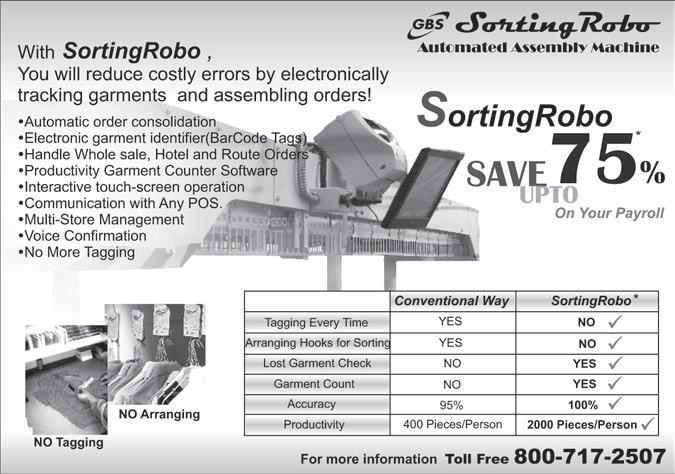
Learn From a Pro
Paul Ceccarelli, former owner of The Cleanist in Plymouth, Mass., says that his cost group was his greatest learning experience.
“At each quarterly meeting, a dozen or so owners would put their information out there, and we’d compare data,” Ceccarelli recalls. “We’d talk over our problems and how we solved them. We reviewed each other’s plans and ideas. Sometimes we’d say, ‘That’s no good.’ But sometimes we’d give suggestions as to how to do something better. This was a big reason that I was able to run a successful business for 37 years. My cost group helped me understand my business.”
BUILDING A CAREER. After college and a stint in banking, Ceccarelli went to work for his father, who owned a small drycleaning/tailoring business in North Plymouth, in 1965. The business was more tailoring, with four seamstresses working in the shop. At the start, Paul found himself pressing. He soon decided that he’d better make changes.
He started a rug cleaning operation
To find past columns from Howard Scott or share this month’s with your colleagues, visit www.americandrycleaner.com.

and worked to build it up. In 1974, he went into uniform rental as an Apparel Master dealer. He got so busy that his rug trade faltered. By now, there were grumblings from above. Ceccarelli’s father and aunt, who co-owned the business, didn’t agree with the direction the company was heading. So, in 1976, he bought them out and took over running the Cleanist.
In 1978, he purchased a large building next door, a former movie theater, and renovated it into a plant. Four years later, he computerized his operation with a POS system, which paved the way for expansion.
In the ’80s, he began expanding his territory by opening drop stores. First there was Duxbury, then West Plymouth, then Kingston. In 1994, needing money to foot the bill for his four children in college, he sold the uniform rental business to Aramark. Then he continued expanding with more drop stores in Plymouth. In 2002, he began—or, rather, re-introduced—route delivery.
In 2013, with his children doing well on their own and expressing no interest in taking over, he sold his business. The 72-year-old worked in the drycleaning business full-time for 48 years, owning his own dry cleaner for 37 of those years.
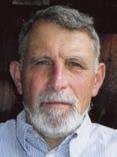
44
American Drycleaner, July 2014 www.americandrycleaner.com INDUST R Y O BS ER VATIONS
Howard Scott
That’s a lot of managing, and he took advantage of many things to assist him and his managers and employees. He fully computerized his operation so that he knew information on a daily basis.
“I received the figure each drop store did daily and if there was a discrepancy, I wanted to know why,” Ceccarelli says. “Alright, maybe if there was a small discrepancy, I put it aside as a potential obligation, but if it happened again the next day, I took action. Without such control, running a multi-store chain is not possible.”
Ceccarelli had to adapt to changing conditions and markets.
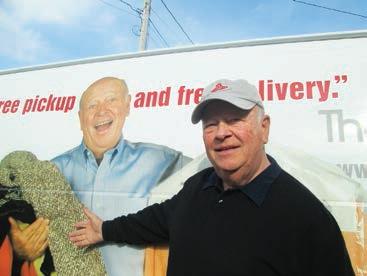
“It is a different world now than when I first entered the industry,” he says. “My father had four tailors working for him. People took care of their clothes back then. Today, everything’s disposable. And, of course, the casualwear trend has really cut into the business. We tried to cater to the market.” ▲

www.americandrycleaner.com
45
American
Drycleaner,
July 2014
Paul Ceccarelli, who spent 48 years in the drycleaning industry, says the cost group to which he belonged was his greatest learning experience.
INDUSTRY OBSERVATIONS
MAKE IT C ONVENIENT . Ceccarelli always sought to adjust his business to take advantage of opportunities.
“Convenience is the biggest factor,” he says. “I believe that convenience is even more important than quality cleaning. If you have a convenient location, with ease of entrance and egress, with open front parking, and are in an active upscale area of stores, you’ll do OK.”
He knew his costs and responded when change was called for. For example, he needed his drop stores to do $4,000 to $5,000 each week in volume. “I moved locations even though I poured a lot of money into a store. It’s all a matter of doing the necessary volume. If the numbers aren’t there, make a change.”
Of course, part of drop-store success is having the right counter people. To this end, Ceccarelli paid particular attention to store managers and counter staffers. Instore training was a must.
“Staffers must know how to handle every situation and how to put the customer at ease,” he says. “It’s understanding of the cleaning process that gives the staffer confidence. Just putting a body behind the counter is unacceptable. Customers will go elsewhere.”
C REATE A F AMILY AT M OSPHERE . Ceccarelli had to deal with all sorts of employees over his almost 50 years in the industry. He offers this assessment: “We couldn’t pay our people 18 to 20 dollars an hour. The economics of the business didn’t allow it. So we created a family atmosphere. We made sure they wanted to work for us.
“In addition, you have to know your people. When something is wrong, you have to find out what it is and resolve the issue. You also have to take time to have fun. For example, last Christmas I spent three to four thousand dollars on our Christmas party. You have to give gifts to loyal staffers.
“You have to learn how to deal with different nationalities. For example, we had six or seven Brazilians working in the plant. I had to get to understand their culture and their ways. But I made them family.”
CAP ITA LIZ ING ONAUTO M ATION. Ceccarelli updated his equipment over and over again.
“What I tried to do is buy equipment so that the process became more automated, faster and simpler,” he says. “Simpler is very important. We created systems and procedures so that the operator didn’t have to think.
“For example, our auto assembly/barcoding system eliminated putting tickets on garments and all that entails. It reduced all kinds of potential errors. Our automatic bagger eliminated the need for staffers to put covers on orders. These pieces of equipment reduced the thinking that staffers had to do. That’s how we got the most efficiency.”
L OO K ING AH EAD . Ceccarelli sees the industry’s future in acquisition.
“I think that we are at a permanent reduced volume of trade due to the casual clothes trend and to other society changes,” he opines. “It is harder to build a business
American Drycleaner, July 2014 www.americandrycleaner.com
46
by expanding your markets through more drop stores and routes. To grow these days, an aggressive firm will expand through ac quisition. That is the way to go.”
But he didn’t expand through acquisition. He built his business on the principle of winning one customer after another, the old-fashioned way. Perhaps that’s why he didn’t build an industry giant. Still, he ran a solid, profitable business for more than 35 years. He serviced his area, with some customers being second- and third-generation patrons.
He contributed to the industry through active involvement in several associations, including co-founding Northeast Fabricare. Yes, he made money. But, equally important, he tried to mold the industry into being more professional and efficient.
So the question is, what can we learn from a pro?
First, find others—association members, a cost group, friendly operators— with whom you can share your business practices and bounce ideas off. Running a business alone is too hard in this marketplace.
Second, keep a close watch on every aspect of the business, never letting anything get out of hand.
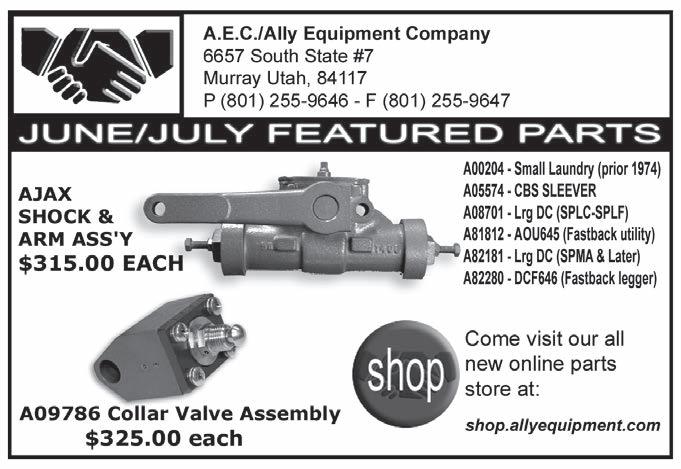
Third, keep a finger on the pulse of the marketplace, never being afraid to change directions, even if there is spent money sitting on the table.
Stay at it, for you’re in it for the long haul, like Paul Ceccarelli. O
Howard Scott is a longtime industry writer and drycleaning consultant, and an H&R Block tax preparer specializing in small businesses. He wel comes questions and comments, and can be reached by writing Howard Scott, Dancing Hill, Pembroke, MA 02359, by calling 781-293-9027 or via e-mail at dancinghill@gmail.com.
www.americandrycleaner.com
July 2014 47
American Drycleaner,
Hurricane Season Prompts Business Reminders
Recognizing that the 2014 hurricane season has begun and will last through November, insurance program administrator

Irving Weber Associates, and its Fabricare Advantage Program, offers these reminders for ways that drycleaning businesses can be prepared in the event of a major storm:

IN PREPARATION
• aintain a phone list of your employees and provide copies to key staff members.

• eep flashlights, e tra batteries, a first-aid kit and a tool kit on hand.
• Determine safe evacuation routes inland.
• Designate one remote number for which to record voice mail messages for employees. Provide this number to all employees.
• nplug any unnecessary electrical devices.
• Inspect, and where possible, repair drains, gutters and flashing.
• Arrange for programmable call forwarding for your main business line. If you are unable to get to your store, you can call in and reprogram the phones to ring elsewhere.
• ive store keys and alarm codes to a trusted employee who lives close to the store, so they can reach the store quickly during an emergency if you cannot.
• Test your emergency lights.

• ill gas tanks and generator.
• Back up computer data daily. eep backup tapes off-site.
• se -listed surge protectors and battery backup systems. They will add protection for sensitive equipment and help prevent a computer crash if the power goes out.
• Protect relocate important documents
insurance policy, bank information, etc.
• Install windstorm shutter plywood over windows and doors.
• Inspect outside of property to secure items that could blow away: chairs, tables, etc.
• Be sure to have cash on hand.
• emove all items possible from floor.
• hut off natural gas supply.
• tay informed about weather conditions.


EMERGENCY ACTION PLAN—POWER OUTAGE
• otify your utility company of the power outage. Obtain information known about the cause and e pected length of the outage.

• nce a power outage has occurred, all compressors and related equipment should be turned off individually. When power is restored, turn on equipment in the same manner to minimize the possibility of an “end rush” that could blow the main fuses.
AFTER THE STORM
• isten to weather stations to be sure that storm has passed.
• Wait until area is declared safe before entering.
• urvey for safety ha ards such as live wires, leaking gas, flammable liquids, etc.
• As soon as possible, begin salvage repair
° Cover broken windows and torn roof coverings
° eparate damaged goods, but beware of accumulating too much combustible debris inside the building
• lean roof drains. O
Irving Weber Associates, Ronkonkoma, N.Y., has been providing insurance services since 1946. It can be reached at 800-243-1811, info@iwains.com
www.americandrycleaner.com

48
American Drycleaner, July 2014
(Image licensed by Ingram Publishing)



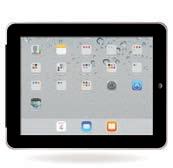
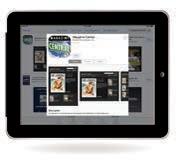

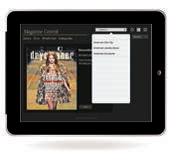








Download Magazine Central and read American Drycleaner on your iPad or Android Tablet Step 1: Go to your App Store and type Magazine Central into search bar Step 5: Click Download Step 3: Open the Magazine Central App Step 2: Click the box to install the app (you won’t have to do this again) Step 6: Click View Step 4: Type American Drycleaner into the search bar Step 7: Read & enjoy! The app stays on your tablet. Check back monthly to download the latest issue.
Avoiding Claims: What You Need to Know About Fabrics & Stain Removal. NCA course, to be held July 13 in Seattle. Call 212-967-3002 or e-mail ncaiclean@aol.com.
NY State DEC Certification. Two-day NCA course, to be held July 13 and July 20 in Nanuet, N.Y. Call 212-967-3002 or e-mail ncaiclean@aol.com.
Introduction to Drycleaning. DLI course, to be held July 14-18 in Laurel, Md. Call 800-638-2627 or visit www. dlionline.org.
Wet Cleaning. NCA course, to be held July 20 in Ohio. Call 212-967-3002 or e-mail ncaiclean@aol.com.
Advanced Drycleaning. DLI course, to be held July 21-Aug. 1 in Laurel, Md. Call 800-638-2627 or visit www.dlionline.org.
Finishing with Tensioning Equipment. NCA course, to be held July 27 in
Secaucus, N.J. Call 212-967-3002 or e-mail ncaiclean@aol.com.
NY State DEC Certification. Two-day NCA course, to be held July 27 and Aug. 3 in Floral Park, N.Y. Call 212-967-3002 or e-mail ncaiclean@aol.com.
Wet Cleaning. NCA course, to be held Aug. 3 in Tampa, Fla. Call 212-967-3002 or e-mail ncaiclean@aol.com.

Radical Drycleaning/Stain Removal. NCA course, to be held Aug. 4-8 in Northvale, N.J. Call 212-967-3002 or e-mail ncaiclean@aol.com.
Extreme Stain Removal & Bleaching. NCA course, to be held Aug. 17 in Bronx, N.Y. Call 212-967-3002 or e-mail ncaiclean@aol.com.
Wetcleaning. DLI course, to be held Sept. 11-12 in Laurel, Md. Call 800-6382627 or visit www.dlionline.org. O

50
American Drycleaner, July 2014
www.americandrycleaner.com
Post your organization’s education and training course announcements (subject to approval) on www.AmericanDrycleaner.com in four easy steps: 1. On the home page, click “Calendar” 2. Click “Add an Event” 3. Type details into form (must be a registered user; site registration is free) 4. Click “Save” (Image licensed by Ingram Publishing)
EDUCATION & TRAINING









HERE’S WHAT’S COMING UP IN AMERICAN DRYCLEANER... IN EVERY ISSUE: • Product News • Around the Industry • Education & Training • Talk of the Trade • Upcoming Events • Your Views Survey Results • Wrinkle in Time • Classifieds OCTOBER Feature: Going Commercial How to sell drycleaning services to hotels, restaurants and other commercial customers. Editorial Submission Deadline — August 15 NOVEMBER/DECEMBER
Fashion & Fabricare Our annual year-end issue hits the runways to discover the styles and constructions that dry cleaners will see in the months to come.
Submission Deadline — September 15
Distributors Directory Continuously updated, our easy-to-use annual directory issue lists distributors of equipment and supplies nationwide.
Submission Deadline — June 15 Want to send a press release or submit a story? Contact Bruce Beggs, editorial director, today! Phone: 312-361-1683 E-mail: bbeggs@americantrademagazines.com ...and much more!
Marketing: Back to Basics How to attract more customers using some tried-and-true promotional strategies.
Submission Deadline —July 15 DON’T MISS OUT © Copyright 2014 American Trade Magazines All rights reserved. ® June 2014 Customer Listen, listen, and listen some more —and then respond immediately Claims 0614adc_p0C1.FINAL.indd 1 5/21/14 5:07 PM
Feature:
Editorial
AUGUST Feature:
Editorial
SEPTEMBER Feature:
Editorial
Breaking Down Brokers
L

ately, my e-mail from readers has been heavy with questions about how to find a good stockbroker. Frankly, I’m surprised at that. In my view, find ing a good stockbroker—or any stock broker—may not be the best course for the typical small investor.
For reasons that I’ve written about before, I don’t believe that most people should invest in individual stocks. Study after study has shown that most profes sional analysts who spend their careers trying to pick winning stocks seldom do any better than the market averages—and more often fall well short of the averages. Some studies have indicated that the typical stock broker does no better than you or I could do when it comes to picking winners.
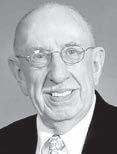
Mutual funds, especially so-called index funds, are the best way for indi viduals to invest in the equity markets. Most people would do well to build their investments around a careful selection of stock and bond funds held for the long term.
Still, there are those hardy souls who like the challenge and excitement of dealing in individual stocks. These are the people who hope to find a stockbro ker who can help them to pick winners.
If you’re seriously thinking about hiring a broker, I recommend that you
first hire a certified financial planner who charges a flat or hourly rate to set up an overall financial plan. It should include insurance, estate planning, and other considerations important to you and your family.
If your planner provides you with a comprehensive outline, it will contain enough information to enable you to do most of your investing directly with the mutual fund companies. By doing that, you’ll get unbiased advice while avoid ing the fees that make stockbrokers rich.
However, if you prefer to work with a full-service broker, there are a few things that you should keep in mind.
Start by calling local offices of bro kerages and asking them to hook you up with a good broker. I think you know how I feel about that approach.
A better approach would be for you to ask family and friends to refer you to a broker. But that may not be your best bet either. The people you’re asking probably aren’t any more qualified to rate a broker’s ability than you are.
Whatever means you choose to make first contact with a broker, it’s going to be up to you to decide whether he/she is right for you. Once you have a candidate or two, I suggest that you set up a telephone or in-person interview. Here are some of the questions you should ask:
HOW DO YOU GET PAID? This is perhaps
52 American Drycleaner, July 2014 www.americandrycleaner.com Y OU R M ON EY
Bill Lynott
the most important question you will ever ask a broker. Most important, you need to know whether the broker is paid on a commission-per-trade basis. If so, ask for a complete schedule of commissions. If the broker balks, you walk.

Some brokers charge a flat annual fee instead of a per-trade fee. This usually runs 1-3% of the value of the assets in your ac count. Need I tell you that a fee of 3% would take half of your profit on an account that managed to generate a 6% return?
Regardless of how your broker charges you for his service, it’s up to you to know every detail. It is, after all, your money.
HAVE YOU EVER BEEN SUBJECT TO DISCIPLINARY ACTIONS? Don’t be shy about asking this. A good broker will be proud to answer. You can check on this yourself by asking for the broker’s Central Registration Depository number. Then call the National Association of Securities Dealers at 800-289-9999, or check its website, www.nasdr.com.
HOW WILL YOU DECIDE ON WHAT TO RECOMMEND THAT I BUY OR SELL? The hard truth is that many full-service brokerages expect their agents to push certain stocks. Even if the broker diligently studies the recom mendations of his company’s analysts, you may not come out a winner. The report cards for analysts at some of the country’s largest brokerages have looked less than exemplary when exposed to the light of public scrutiny.
Regulatory changes may have cleaned up some of the abuses involving analyst recom mendations, but that remains to be seen.
You should maintain good communica tion with your broker, especially when it comes to his reasons for buy/sell recommendations.
www.americandrycleaner.com
DO WE UNDERSTAND THAT I AM IN SOLE CONTROL? Never, under any circumstances, should you give your broker the authority to make trades on his/her own without your specific approval. If you read business news at all, you don’t need to be reminded of the disaster that awaits those who turn control of their trades over to a broker.
HOW LARGE IS YOUR AVERAGE ACCOUNT? Some brokers concentrate on larger accounts, a half-million dollars and up. If you’re in the minor leagues in this department, it wouldn’t be a good idea to hook up with a big-league broker. It might be tough to get his attention. There are other issues, of course, not the least of which are personality considerations. If you entrust a goodly portion of your in vestment portfolio to one broker, you need to make sure that the chemistry is right between you. That’s where an in-person interview before you sign up can be a big help. O
Information in this article is provided for educational and reference purposes only. It is not intended to provide specific advice or individual recommenda tions. Consult an accountant or tax adviser for advice regarding your particular situation.
Bill Lynott is a freelance writer whose work appears in leading trade publications and newspapers, as well as consumer magazines including Reader’s Digest and Family Circle. Visit his website at www. blynott.com or e-mail blynott@comcast.net.
American Drycleaner, July 2014 53
(Photo: © iStockphoto/Gunnar Pippel )
America’s Best Cleaners meeting
focus: ‘Human Factor’
America’s Best Cleaners (ABC) affili ates met recently in Newport Beach, Calif., for the organization’s three-day, semi-annual group meeting, which fo cused on the theme of “The Human Factor,” and how to “leverage people power within the drycleaning business.”
Josef Shapiro, owner of Emergent Business and eMyth business coach, was among the event’s featured speak ers. Shapiro spoke on the “importance of personal organization and aware ness in business development,” sharing tips and exercises on how business owners can better define their own needs in order to set workplace/ employee expectations, according to ABC.
Catherine McCann, affiliate of Best Cleaners in Albany, N.Y., discussed The Evolution of Success, and the im portance of having a structured plan for employee development, and how to define, build, budget and institute a business plan, ABC says.
The organization’s own professional team also led discussions during the meeting, which was hosted by local affiliate Kona Cleaners.
ABC Executive Director Christo pher White further discussed the topic of employee training and management, while founder Ed D’Elicio spoke on
the topic of “designing workspaces and plants to increase human effi ciency,” according to ABC. Katherine McGraw Patterson, ABC marketing director, concluded the meeting with a talk on how to use employees as “mar keting assets.”
“These are the best dry cleaners from their respective markets,” says D’Elicio, “and these meetings provide an opportunity to come together to share what they’ve learned in their own businesses and to explore busi ness best practices as a group.”
Bartlett joins Fabritec, company founded by grandfather
Fabritec International has added a new member to its research and develop ment team, chemist Amy (Jordan) Bartlett, the third generation of her family to work for the Florence, Ky., com pany.
Bartlett earned a bachelor’s degree in chemistry from Miami University in 2006. Her work experience includes quality control, research and project management in the pharma ceutical industry, says the company, adding that she is eager to learn the fabricare industry, from manufacturing and customer service to the processing
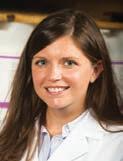
54 American Drycleaner, July 2014 www.americandrycleaner.com
A ROUND T H E INDUSTRY
Amy Bartlett
of the Fabritec drycleaning system.
Bartlett is the daughter of company President John Jordan and granddaughter of the company’s late founder, Al Jordan.
Lapels Dry Cleaning customers donate nearly 5 tons of clothing
When a clothing drive nets four tons of clothes, it’s difficult to expect more the fol lowing year—unless you happen to be talk ing about Lapels Dry Cleaning customers.
With three additional states worth of Lapels Dry Cleaning stores participat ing this year, the drycleaning franchisor’s clothing drive to benefit Big Brothers Big Sisters generated 9,480 pounds of clothes from customers in Massachusetts, Rhode Island, Connecticut, Louisiana, Arizona, Missouri and New Jersey.
As impressive as the weight of the clothes might be, what it represents to Big Brothers Big Sisters organizations in those states is the real value of the drive, the Hanover, Mass., franchisor says. The clothes donated will be resold at various thrift shops and other second-hand cloth ing stores, helping to fund Big Brothers Big Sisters programs.
“Our customers are the best. I say it all the time, but once a year during our drive for Big Brother Big Sister, La pels Dry Cleaning customers prove it and then some,” says Kevin Dubois, CEO of Lapels Dry Cleaning, an environ mentally friendly dry cleaner with more than 50 locations nationwide. “What’s re ally staggering about these donations is that the drive took place over two weeks, April 5 to April 19. That’s a lot of clothes
www.americandrycleaner.com
in a very short period.”
By state, Lapels Dry Cleaning cus tomers donated 6,118 pounds in Massa chusetts, 971 pounds in New Jersey, 750 pounds in Louisiana, 600 pounds in Rhode Island, 420 pounds in Arizona, 345 pounds in Connecticut, and 276 pounds in Mis souri.
“What was very encouraging was the level of participation in Louisiana, Con necticut and Missouri,” DuBois says. “This is the first year we have had stores from these states participate, and their cus tomers stepped right up.”
More than 30 Lapels Dry Cleaning stores participated in the Big Brothers Big Sisters project.
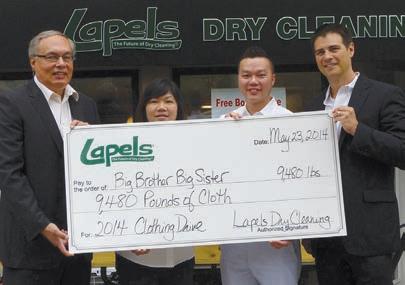
“The partnership between Lapels Dry Cleaning stores and Big Brother Big Sister has been one of the true pleasures of my job,” says Steven Beck, executive direc tor of the Big Brother Big Sister Founda tion. “Lapels Dry Cleaning is a first-class organization, and that’s reflected by their customers. We thank each and every one of them for their generous donations.”
American
Drycleaner, July 2014
55
(From left) Steven Beck, Big Brother Big Sister Foundation; May Situ and Bao Chen, owners of Lapels South End; and Kevin Dubois, CEO of Lapels Dry Cleaning.
In Memoriam
Martin Haubenstock, R.V. Davies Co.
Martin Haubenstock, president of the Textile Care Allied Trades Association (TCATA) in 2002-2004, died June 8, the association reports.
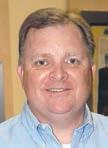
Previously, Haubenstock was the presi dent of R.V. Davies Co., a distribution business located in northern New Jersey, until his retirement.
Haubenstock was active in TCATA, having served as chair of the annual con ference business program (twice) and as chairman of the 1997 annual conference. He received TCATA’s “Young Timer of the Year” award and served several terms on the board of directors. He was also active in volunteer work, TCATA says, having served as chairman at the Barnert Hospital Foundation.
Haubenstock is survived by his wife, Barbara; his children, Seth and Betsy, and their spouses; and four grandchildren.
Donations in his memory may be made to Barnert Temple’s Jed Haubenstock Bar TY Fund. Call 201-848-1800 to learn how you can donate, or call the TCATA office, 973-244-1790, for more information.
Martinizing Dry Cleaning names McGee director of franchise development
Martinizing Dry Cleaning, Milford, Ohio, has recently named Terry McGee its director of franchise development. He brings more than 17 years of franchising
experience to the post.
“We are extremely excited to have Ter ry join our team,” says Kevin Kaeding, president and CEO of Martin Franchises Inc. “We know with his strong franchise development experience and our aggres sive growth plans for Martinizing that we will be providing entrepreneurs with fran chise ownership opportunities all across America.”
McGee attended Central Michigan Uni versity, where he earned his bachelor of applied arts in broadcast management and advertising.
Previously, he worked for Signarama, a graphics company in West Palm Beach, Fla., working on the operations side of the business where he trained new staff. He began his career in franchising at Signarama by becoming district operations manag er, overseeing more than 100 franchise locations.
Terry McGee
He then moved to Cin cinnati to work as regional manager for Coverall Cleaning Concepts, a commercial cleaning franchising company. Later, he worked for E.nopi, a children’s education franchise from Korea.
At Martinizing, McGee works with and educates potential candidates who are looking to purchase a franchise.
This job is “exciting for me because I get to work with a lot of different indi viduals,” says McGee. “The excitement is to give people, a lot of times, a chance to own their own business for the first time, creating a new wealth for them, a new fu ture and, in a lot of cases, helping them set up something as legacy for their kids down the line.”
American Drycleaner, July 2014 www.americandrycleaner.com
56
Martinizing continues to focus on ecofriendly, upscale drycleaning services, the franchisor says. It has more than 400 stores in the United States, Canada, Ecuador, Peru, Indonesia, Hong Kong and Japan.
‘Round Table’ business organization hosts 75 th annual meeting
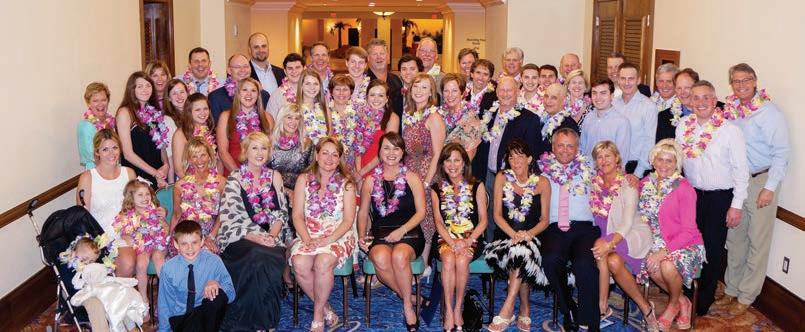
The Round Table of Launderers and Dry Cleaners—an informal group of top ex ecutives from laundry, linen, industrial and drycleaning companies—convenes annually to address mutual concerns and openly exchange ideas. Fifteen members, invited to join the organization based on their company’s demonstrated best prac tices, gathered in Nassau, the Bahamas, earlier this year for the organization’s 75th Annual Meeting.
It featured a week of meetings covering topics that are key to running a successful business in today’s economic environment. Topics included How’s Business, focusing on the financial health of the industry; marketing and advertising; pricing strategies; and working with a board of directors.
In keeping with the Round Table’s tra dition of hearing from an invited guest (and potential new member) each year, the 75th Annual Meeting included a presenta tion by Classic Cleaners of Indianapolis.
“This year’s Round Table focused on five strategic areas of our operations,” says Tom Zengeler, president of Zengeler Cleaners, Northbrook, Ill. “This exchange of strategic ideas will help each of us im prove several areas of our businesses, from meeting the evolving needs of today’s customer, compliance with industry regu lations, and implementing technological advances into our business.”
The Round Table never has a paid fa cilitator; the responsibility is passed from member to member. And because an open exchange of ideas is the lifeblood of the group, each participant’s “price of ad mission” is to play an active part in the presentation of at least one topic at the conference.
Since no two operations are competi tors, it has become an accepted practice to exchange this kind of highly confidential information. Round Table attendees are also encouraged to visit each other’s op erations to further the learning process. O
57
www.americandrycleaner.com American Drycleaner, July 2014
Attendees at the 75th Annual Meeting of the Round Table of Launderers and Dry Cleaners pose for a group picture.
2014 RATES: One- to five-time rate: $2.00 per word, boldface $2.10 per word. Minimum charge: $25.00 per ad. Call or write for our three- and 12-time rates. If box number is used, add cost of 5 words. Display classified rates are available on
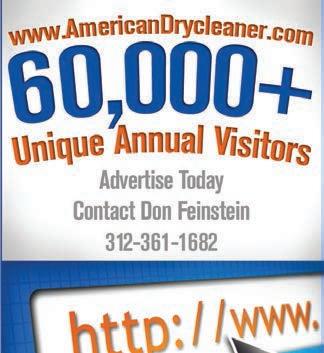

request. All major credit cards are accepted.
PAYMENT FOR CLASSIFIED ADS: Must accompany order. DEADLINE: Ads must be received by the 1st of the preceding month. For example, for a June ad, the closing date is May 1st.
EQUIPMENT FOR SALE
Lindus PM80 Multi-Solvent Machine (Hydrocarbon or GreenEarth) Manf 2006. Touch Screen, fully automated/programmable. Maintained by local Manufacturer Rep. Located in Santa Ana, CA. Accepting Offers/Call for photos 949-939-7640
$995 New with card processing 58 American Drycleaner, July 2014 www.americandrycleaner.com
BUSINESS
COMPUTER SYSTEMS COMPUTER SOFTWARE Western Wonder Touch $990 (refurbished) $1990 (new) 1-year warranty Perfect for small to medium sized cleaners Various management reports Absolutely reliable, tested systems www.WesternDCcomputer.com 773-878-0150 westernk@msn.com
OPPORTUNITIES
Your Own Drycleaners—Managers, Spotters, Tailors, Pressers!
your
Own
100% Financing. Plant or Drop, location of
choice. Call 1-561-302-5031 or 1-888-275-6637.
REWEAVING SERVICES

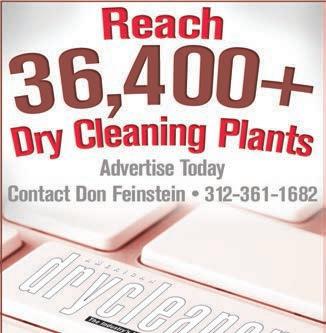
W ITHOUT-A-TRACE WEAVERS— More than 50 years’ experience. We are the experts in silks, knits, French weaving and piece weaving. Reasonable prices. Send garments for estimate to: 3344 W. Bryn Mawr, Chicago, IL 60659; 800-475-4922; www.withoutatrace.com.
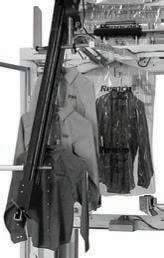
59
www.americandrycleaner.com American Drycleaner, July 2014
EQUIPMENT FOR SALE GARMENT GUARD Bagger improves your bottom line packing single or multiple garments
system reduces labor costs.
cost and inventory with just one stock tubing material on hand.
in the U.S.; backed by customer service support staff for parts and technical assistance.
of up to 8 packages/min. and 5 pieces/pack. PO Box 116 Homer, MI 49245 USA 800-409-5225 www.Rennco.com/gg ™ CONTACT US FOR RRODUCT BROCHURE & VIDEO
Automatic
Less
Made
Speeds
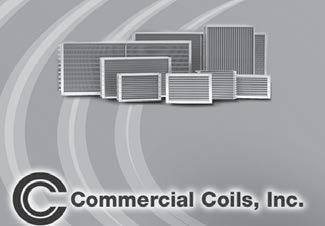

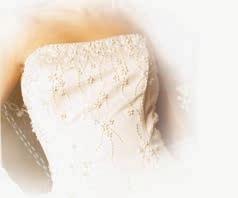
SUPPLIES 60 American Drycleaner, July 2014 www.americandrycleaner.com SUPPLIES 800-532-2645 www.comcoil.com Laundry/Dry Cleaning Coils Steam Or Water Replacements Large Inventory • FASTDelivery SUEDE & LEATHER SERVICE LEATHER-RICH INC. Since 1977 • High quality cleaning, refinishing & repair Leather, Suede and Fur; • Free shipping in USA and rewards program; FOR MORE INFORMATION: E-mail: leatherrich@att.net Call 800-236-6996 Route Service in Upper Midwest www.AmericanDrycleaner.com Call: Bruce Gershon, President www.ArrowLeatherCare.com 800-542-7769 AMERICA’S MOST RECOMMENDED LEATHER & SUEDE CLEANER Call: Bruce Gershon, President www.ArrowLeatherCare.com 800-542-7769 Specialists Wholesale High Fashion Gown Cleaning & Preservation
American Drycleaner and AmericanDrycleaner.com
A WINNING TE AM
E-News Web Print
American Drycleaner is the industry’s premier publication for news relating to drycleaning plants. In it, you’ll find profiles of successful businesses and their owners, tips for running your operation more successfully, expert advice, and much more.
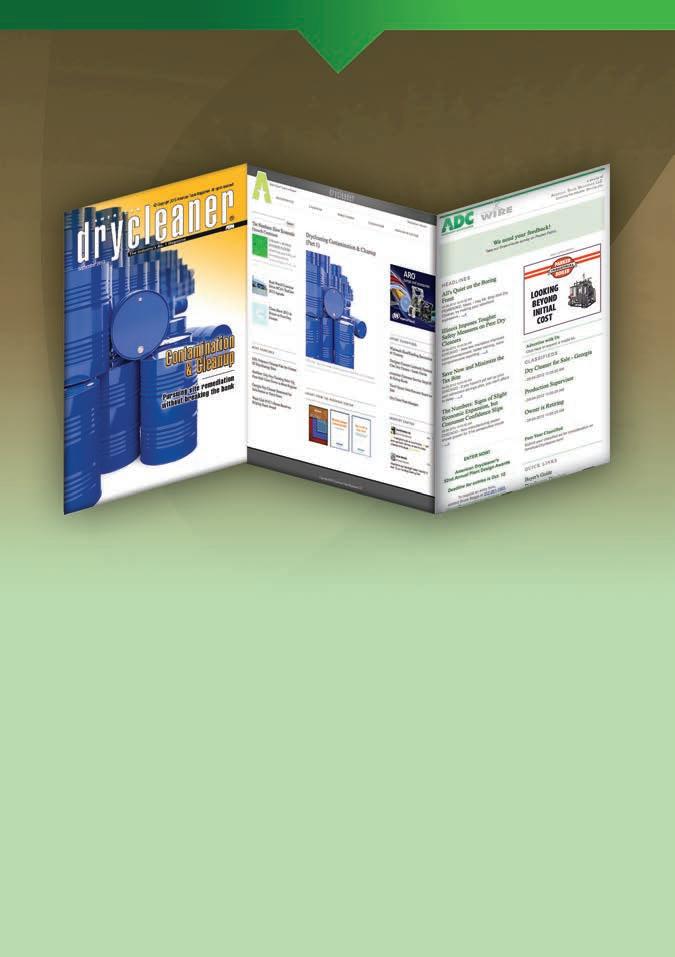
AmericanDrycleaner.com is your one-click site for all of the most up-to-date information on the industry today. Stories are updated daily to ensure you’re always informed. Plus, online tools such as the Distributors Directory and Buyer’s Guide will fulfill all of your plant’s needs.
Drycleaner,
61
www.americandrycleaner.com American
July 2014
............................
................
A.L. Wilson Chemical Co. ............... 1 Ally Equipment Co. ................... 47 Arrow Leathercare Services 60 bizzie .. . . . . . . . . . . . . . . . . . . . . . . . . . . . . .17 Cleaner Business Systems 3 Cleaner’s Supply ...................... 60 Columbia/ILSA ...................... BC Commercial Coils 60 Dajisoft ............................. 11 Fabricare Management Systems 9 Firbimatic
27 Global Business Systems
43 Hamilton Engineering .................. 21 In The Bag Cleaners.................... 33
Iowa Techniques ....................... 5
Advertiser
62
www.americandrycleaner.com
Irving Weber Associates ................ 13 Laundrylux 25 Luetzow Industries ..................... 60 Maineline Computer Systems ........... IFC Mustang Enterprises 35 Parker Boiler Co. .................... IBC Personal Touch Systems 58 QuickSort ............................ 29 Rennco .............................. 59 Royal Basket Trucks 45 Scan Q . . . . . . . . . . . . . . . . . . . . . . . . . . . . . .15 SPOT Business Systems ................. 7 Advertiser Page No.
Page No.
American Drycleaner, July 2014
Well Cleaned...
Continued from page 64
50 YEARS AGO. Jack Hartley of Wardrobe Cleaners in Redmond, Ore., finds ways outside of dry cleaning to earn his money. Along with sales of zippered plastic garment bags, he is now selling distilled water to housewives. He accumulates water from traps throughout his plant’s machines and sells jugs of the recycled water to housewives for their steam irons. Jim Burkholder, another Oregon cleaner, flooded a portion of his parking lot to transform it into a skating rink during cold weather. Neighborhood kids enjoyed using the fresh ice. … Kathryne Buie Roberts acts as home counselor “Jennie Bright,” who has assisted locals with more than 12,000 problems since 1960. “I think ‘Kathryne’ is a thing of the past. I have become Jennie inside and out,” Roberts says. She promotes Camel City Laundry & Drycleaning in Winston-Salem, N.C., over the radio and in the local newspaper. As Jennie, she advises men, women and, occasionally, children about daily household hints. A boy once called in because he spilled on his mother’s settee and was hoping to clean it “real quick” before she returned home. Roberts’ popularity led to a write-up on the women’s page of a local paper. … While looking to make his business more memorable, Leonard Krantz of Broadway Cleaners in Redwood City, Calif., decided that he needed a slogan. “Well Cleaned, Well Dressed, Well Pressed” sums up the services the store provides. He started out with an outdoor pylon sign reading, “You Look Best Cleaned & Pressed,” and he has since installed flashing signs at the front of his building. The three lighted arrows
www.americandrycleaner.com
point down toward his store sign to set his location apart from his close-by competition of five other cleaning outlets and plants. “We’ve made ‘Well Cleaned, Well Pressed, Well Dressed’ a mindsticker,” Krantz says. “And there’s no better proof than in the books. After seven years in business, this one is our best yet!”
75 YEARS AGO. As a dry cleaner by day and circus performer by night, Portis Sims of Gainesville, Texas, gains business through his unique hobby. After a full day at Portis Sims Dry Cleaners, he and his “attractive daughter” Jane don costumes in preparation for performances, sometimes reaching 100 miles from home. He entertains audiences with tightrope walking and animal training, having taught his dog, Pudge, to walk the high wire within two months. His dog’s first performance didn’t go as planned as Pudge had stage fright, which led to a fall. However, the alert Sims caught the little dog. Despite this one fluke performance, professional circus people have declared Pudge the best in the world. Sims has since trained horses, and he plans for a dog and monkey riding pony-back in their upcoming season. The circus brings the drycleaning business a slew of orders, and Sims’ plant is often full to capacity. … The National Institute sent American Drycleaner some exciting photographs of their extensive testing. Their research has expanded as the industry becomes more chemistry-minded. With bleach, especially, the Institute is running tests to measure pH and reactions with wool. Other tests focus on impurities that build up in solvents, and methods to clean leather and metallic corrosion from embellishments. O
— Compiled by Lauren Dixon
American Drycleaner, July 2014 63
Well Cleaned, Well Dressed, Well Pressed

10 YEARS AGO. Hoffman/New Yorker is celebrating its 100th anniversary this year. Founded in 1904, The Hoffman Pressing Machine Co. sold foot-operated pressing machines, which were designed by Asa Hoffman in order to compensate for an injured shoulder. Years later, the business merged with the New Yorker Pressing Machine Co. to create Hoffman/New Yorker. Today, the company designs, manufactures and markets presses, drycleaning machines and shirt machinery for dry cleaners and launderers. It also sells pressing and fusing equipment to the apparel industry. … Although the turnout was lower than expected, the Texcare International show was a success. The 13,500 visitors from 73 countries was a smaller total than the 17,000 guests that organizers expected. However, it was reported that 95% of visitors rated the five-day textile fair “a complete success,” and the exhibitors responded well with 82% reporting as feeling satisfied with the event. Texcare International, or the World Market for Modern Textile Care, is hosted in Frankfurt, Germany, every four years. Of the 252 exhibitors, 158 were from outside of Germany, and 13 came from the U.S. Aside from booths advertising products and services, attendees could also attend industry lectures.
25 YEARS AGO. Jim and Marta Nixon have seen great success from their VIP PLUS Express Service, which offers a “flexible discount” program for its members. The couple owns a One Hour Martinizing and two Nu-Way Cleaners in Greeley, Colo. By offering a current advertised discount or a percentage-off discount, VIP customers receive savings from weekly specials without the hassle of clipping coupons. Customers can mix and match to receive the best discounts offered. The service has unique features such as an embossed plastic ID card, payment options with MasterCard and VISA, and a weekly advertisement in the newspaper. … Mark Boggs, a 20-year-old counter clerk, has received the Sterling Supply Corp. Herman Levine Memorial Scholarship to the International Fabricare Institute’s General Drycleaning Course. The $1,000 scholarship covers the recipient’s tuition fees, reading materials and living expenses during the three-week course in Silver Springs, Md. Boggs works at Penrose Cleaners in Carlisle, Pa.
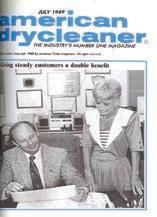
July 1989
WRINKLE IN TIME 64 American Drycleaner, July 2014 www.americandrycleaner.com
▲ 63
Since 1919 Parker boilers have been engineered for more efficient operation (whether gas, oil, or combination gas/oil fired) for delivery of hot, dry steam in less than 10 minutes. And Parker boilers have a longer service life for a greater return on your investment.
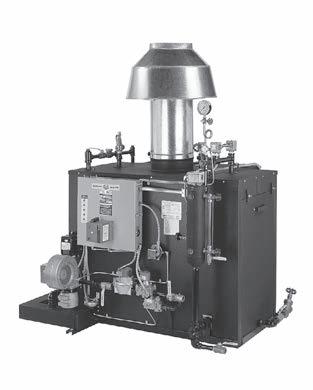
All Parker boilers are delivered complete, ready to connect to utilities. What’s more, every boiler is test fired before it leaves the factory so you can count on getting up and running as soon as possible. Kompact mounted return systems are available on 3 to 25 hp boilers to save on installation costs.
Parker boilers are designed for ease of routine maintenance, annual inspections, and on site repairs, so there is less down time, more reliability. Parker boilers also have extra heavy, insulated, double-wall steel cabinet construction (Stainless Steel available).
All of Parker’s superior quality boilers are available at competitive prices and have been distributed through our regional representatives for over 60 years. Parker
4 REASONS TO CHOOSE PARKER BOILER Parker Boiler Company • 5930 Bandini Boulevard, Los Angeles CA 90040 Phone (323) 727-9800 • Fax (323) 722-2848 • www.parkerboiler.com
ENGINEERED
BETTER
boilers are UL or
listed
and
NOx models are certified to SCAQMD Rule 1146.2 emission requirements. Steam Boilers From 1.5-150 HP Steam Boiler Accessories Feed Systems, Blow Off Tanks, Water Softeners & Chemical Feeders Indirect Water Heaters From 288-2878 Gallons per Hour 100° Rise ermal Liquid Heaters From 126,000 to 6,250,000 BTU Better Engineered 1 Better Designed 2 Better Packaged 3 Better Value 4 For more data circle 65 on Fact Finder Card
ETL
and ASME
NB registered. All our Low
The Ev luti n of Clean

Hydrocarbon
Highlights
• Cleans anything
• Use water freely in spotting
• No static. No chemical odors
• No more lint rolling of garments
• 23 gallons of solvent fills machine
• 10-fold reduced waste stream


• No chiller required. No steam
• Lowest utility consumption of any drycleaning machine
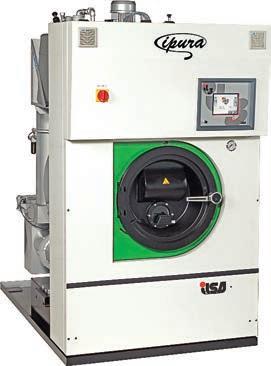
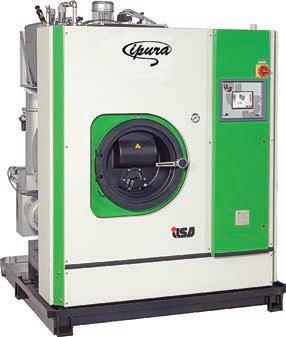
• Solvent mileage between 5,000 and 8,000 lbs. per gallon
• No boltdown. No extraction
• Shortest cycle time in the industry, average 44 minutes
• No springs. No base tanks
• No powder to add. No additives to inject or charge
• Can be operated 24/7/365
• So simple an air quality inspector can operate it
• Available in 40 lbs, and in two footprints
231 Edison Ave • West Babylon, NY 11704 (800)446-5634 • In NY (631)293-7571 www.columbiailsa.com FM Approved
“ there is always ingenuity, passion and determination behind every great machine”





































































































































 By Bruce Beggs, Editorial Director
By Bruce Beggs, Editorial Director
















































































